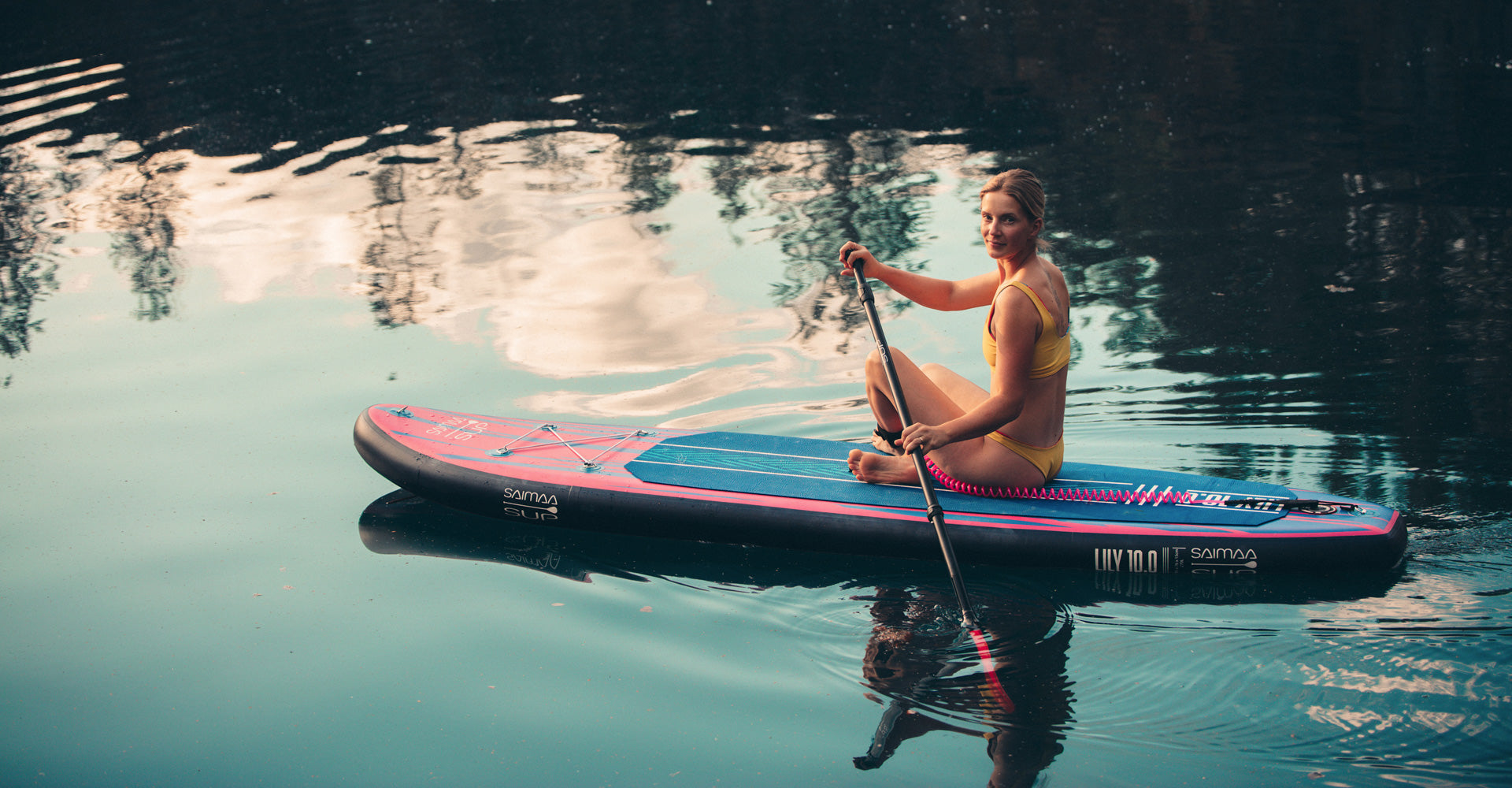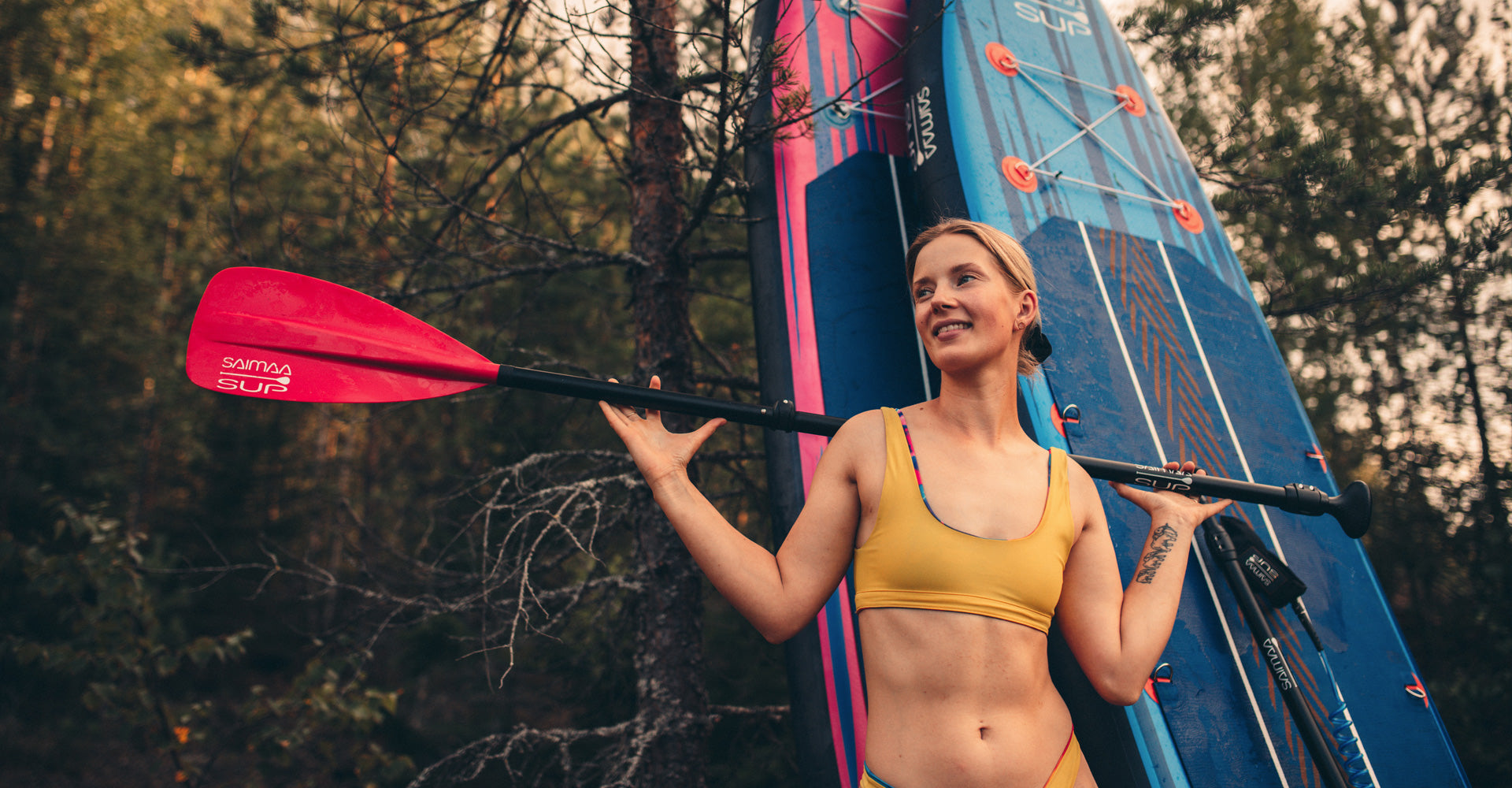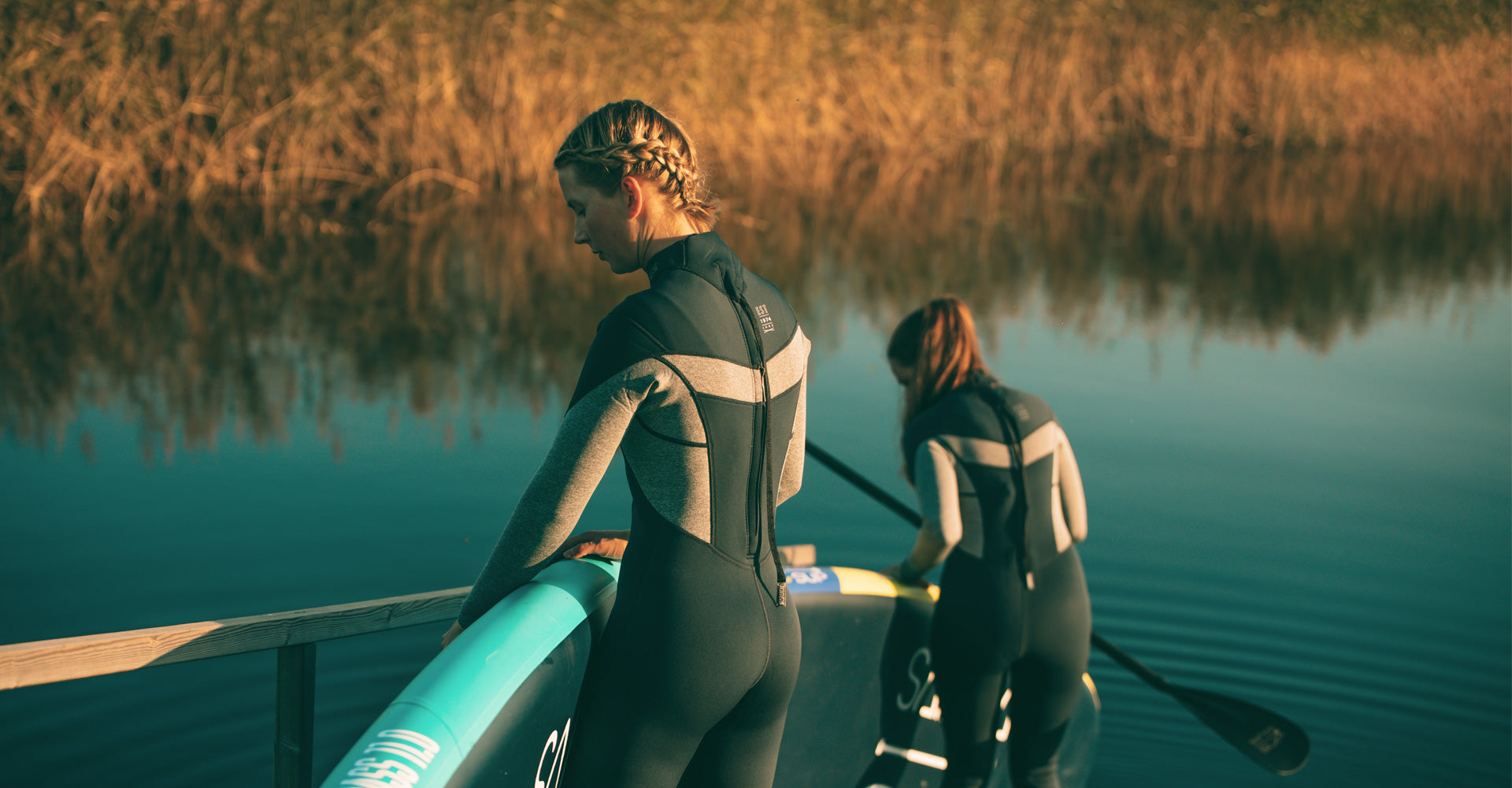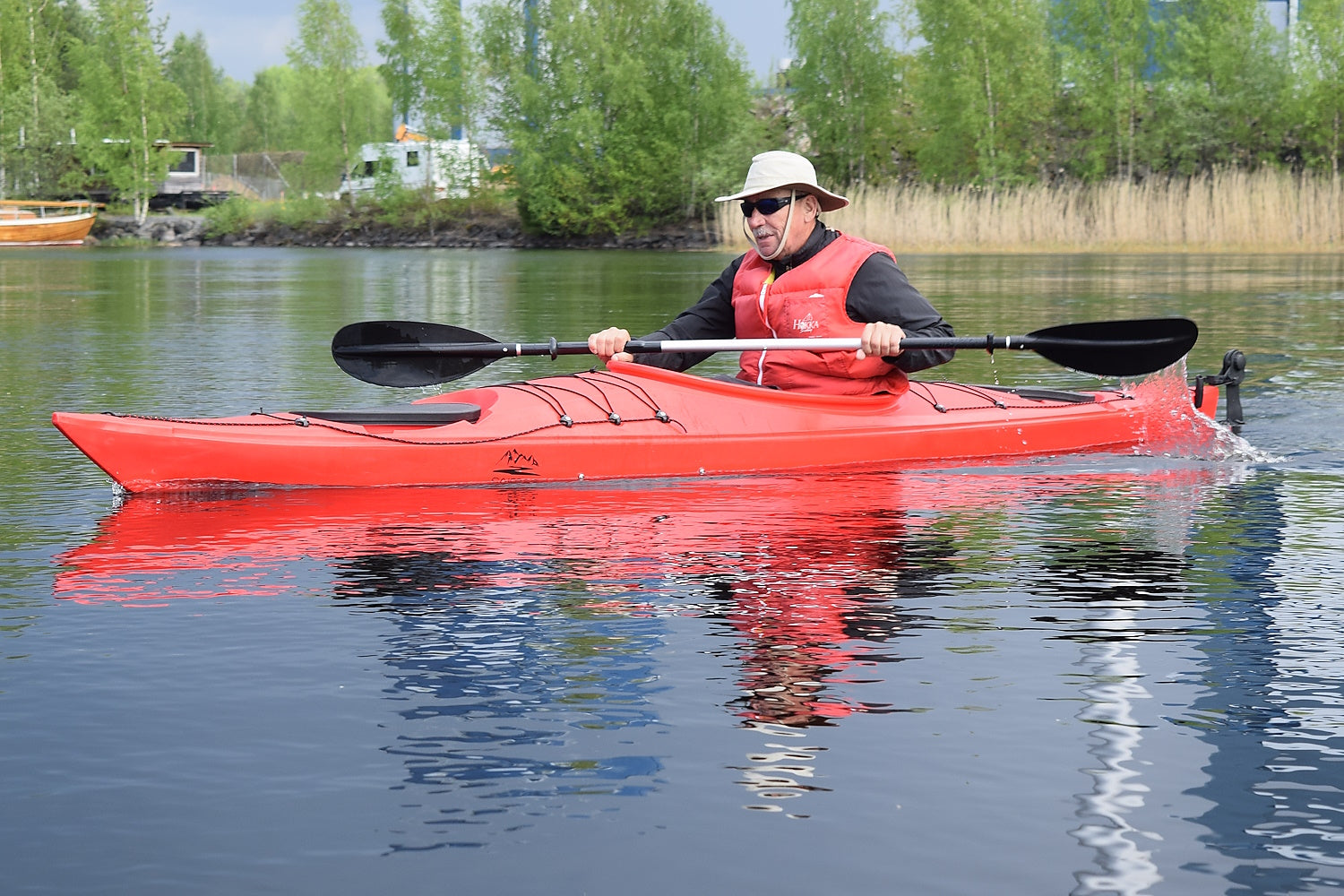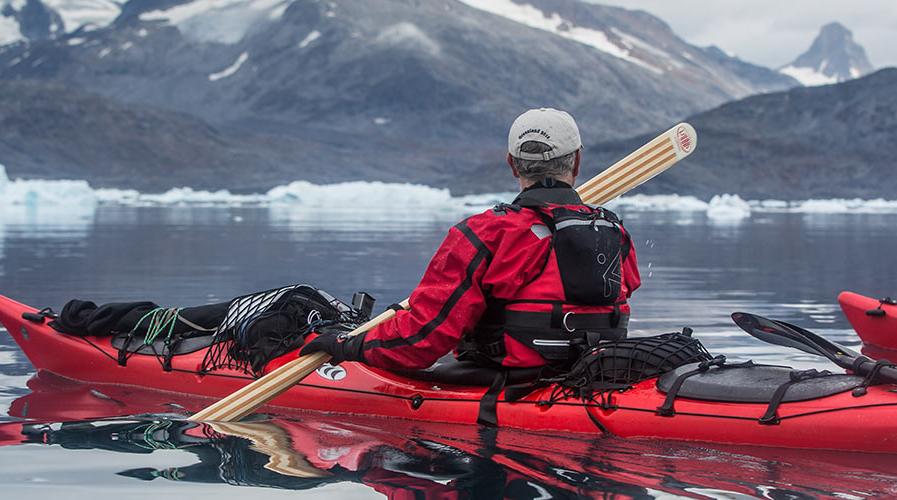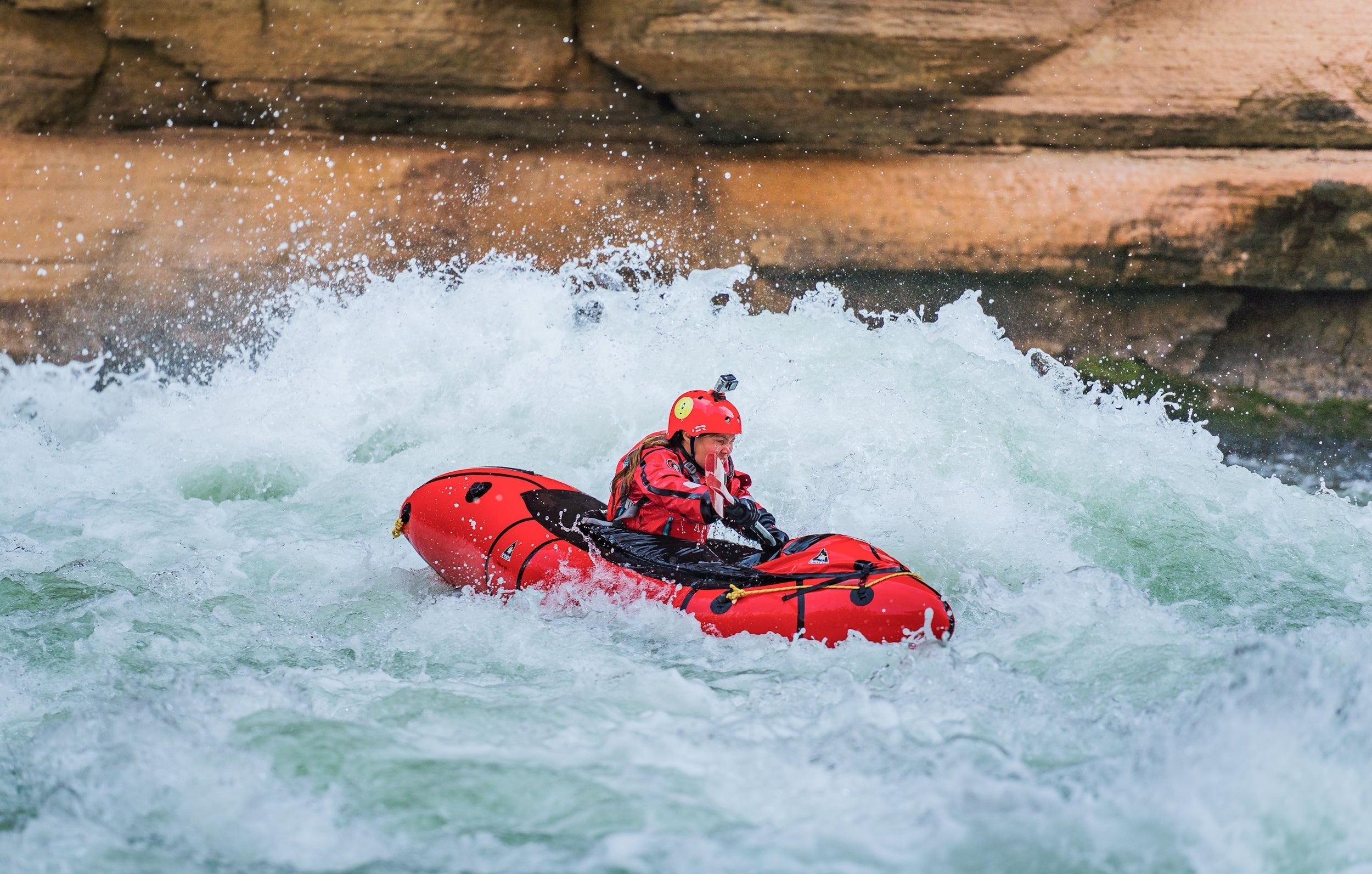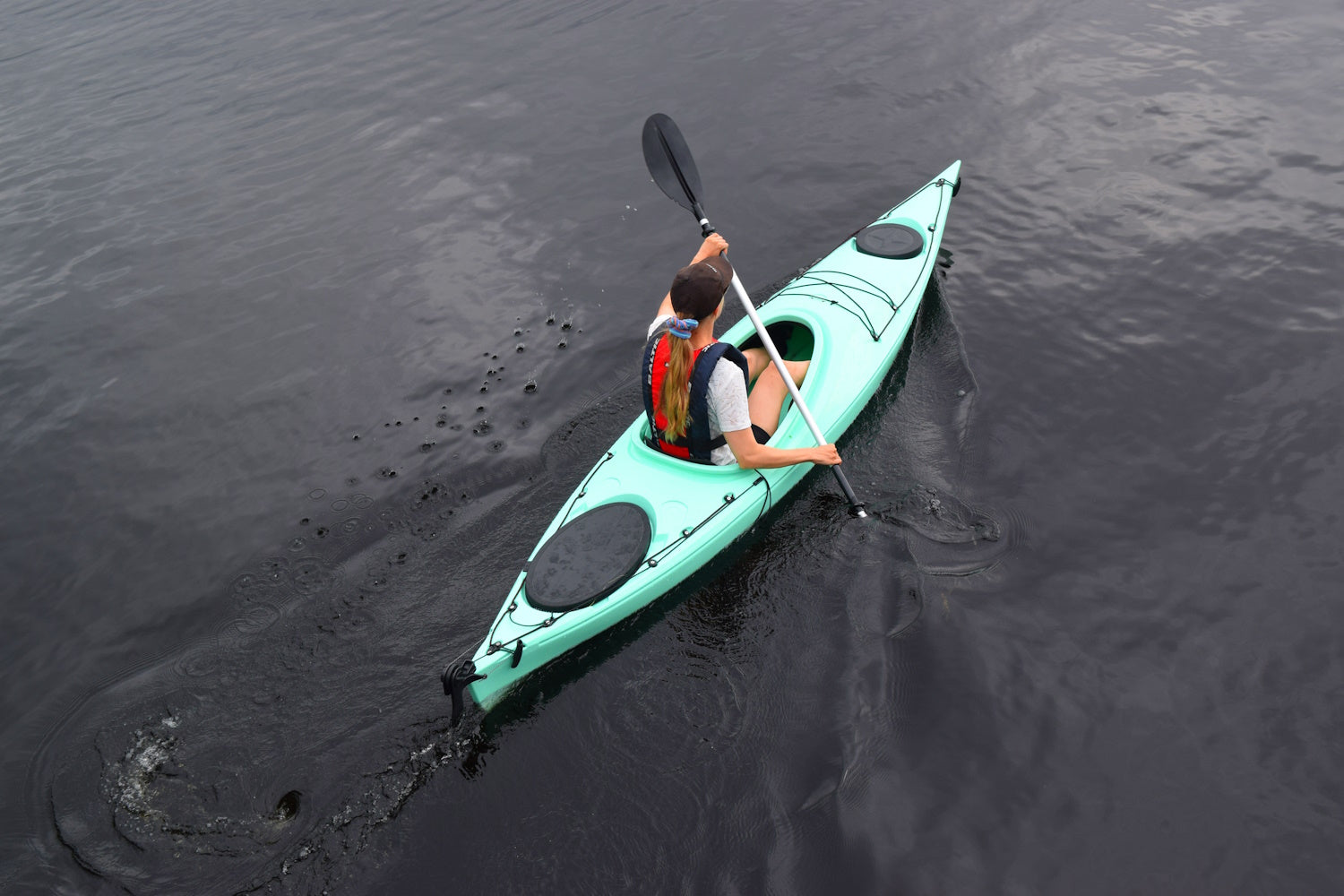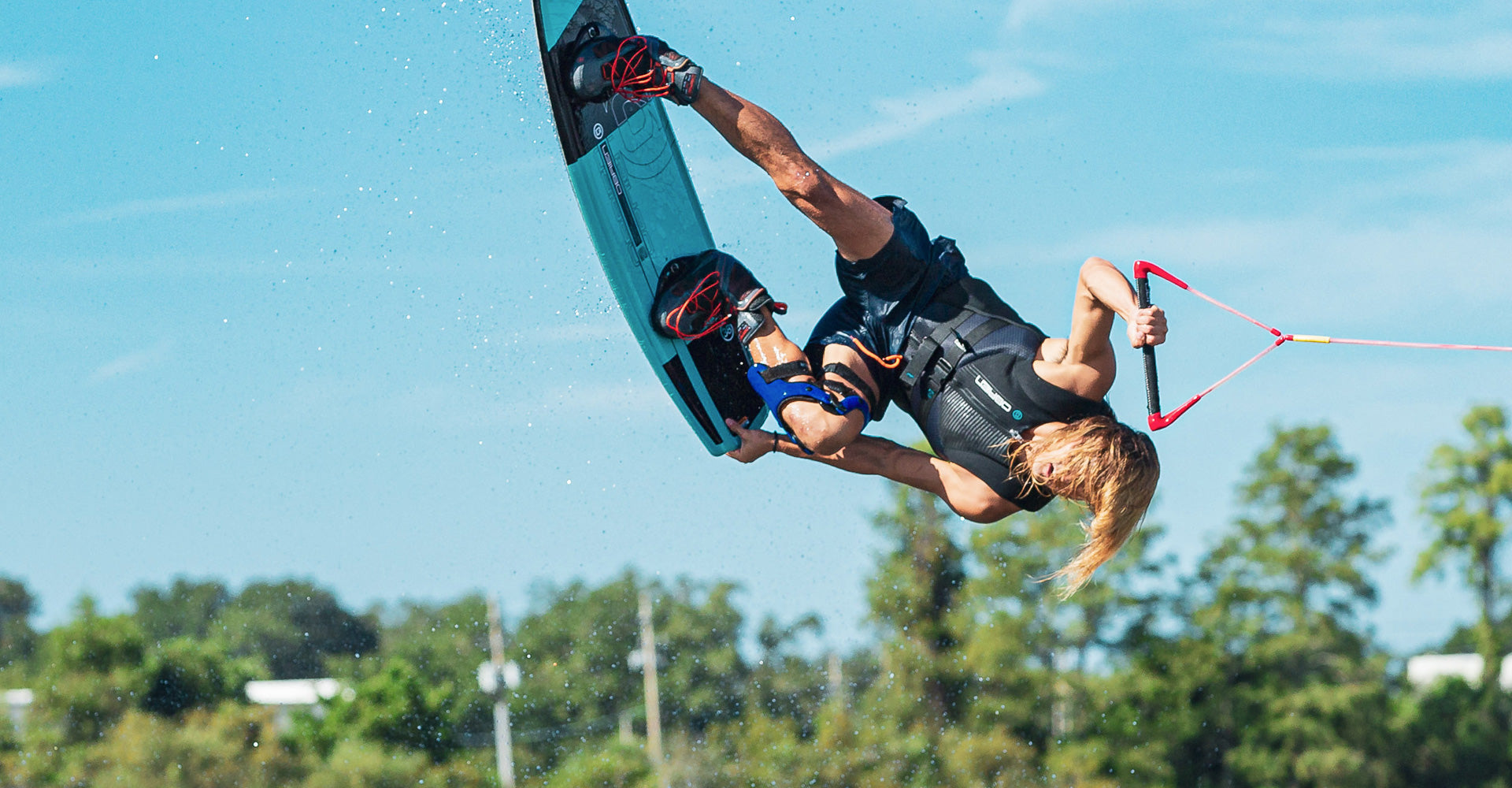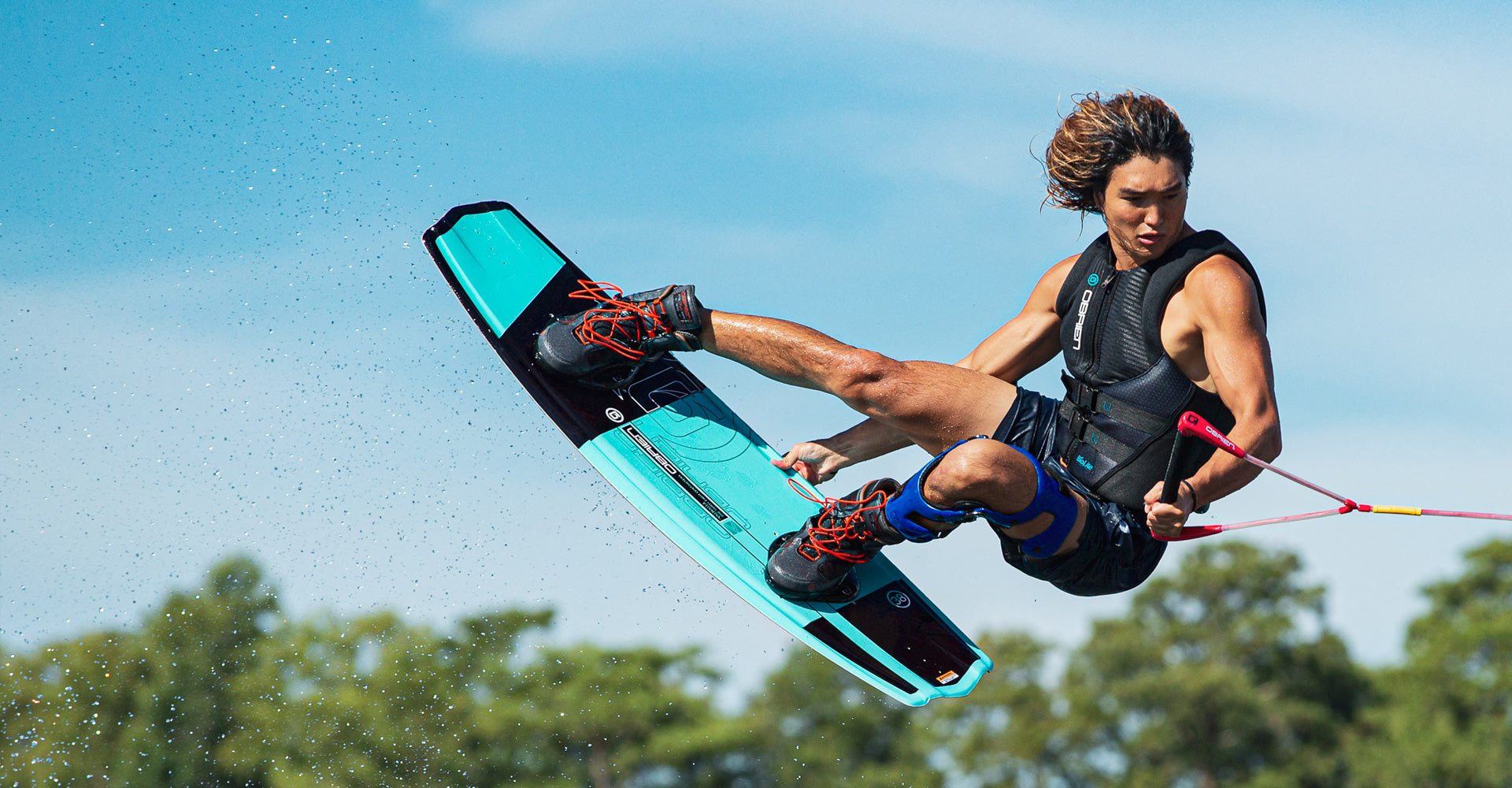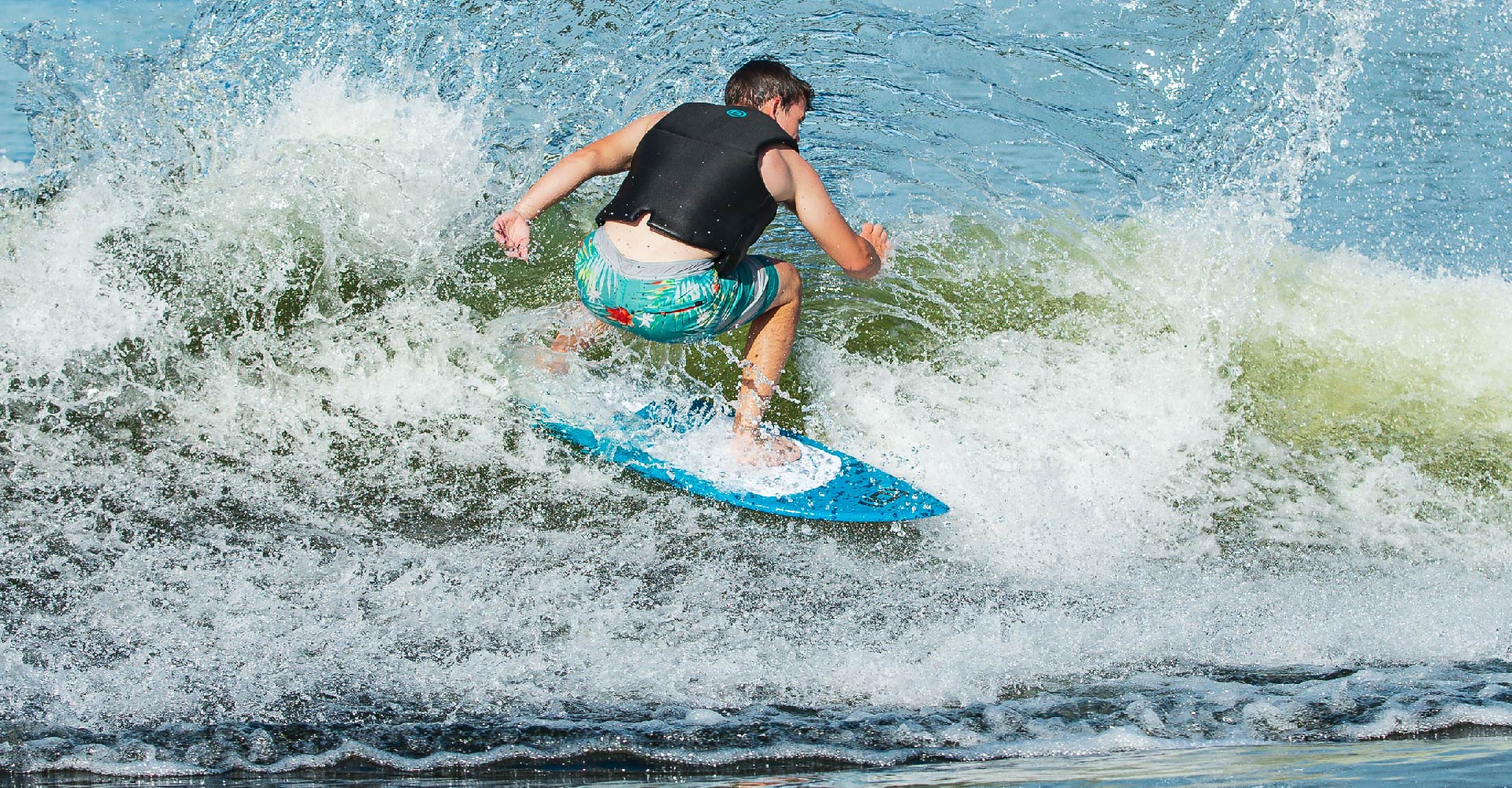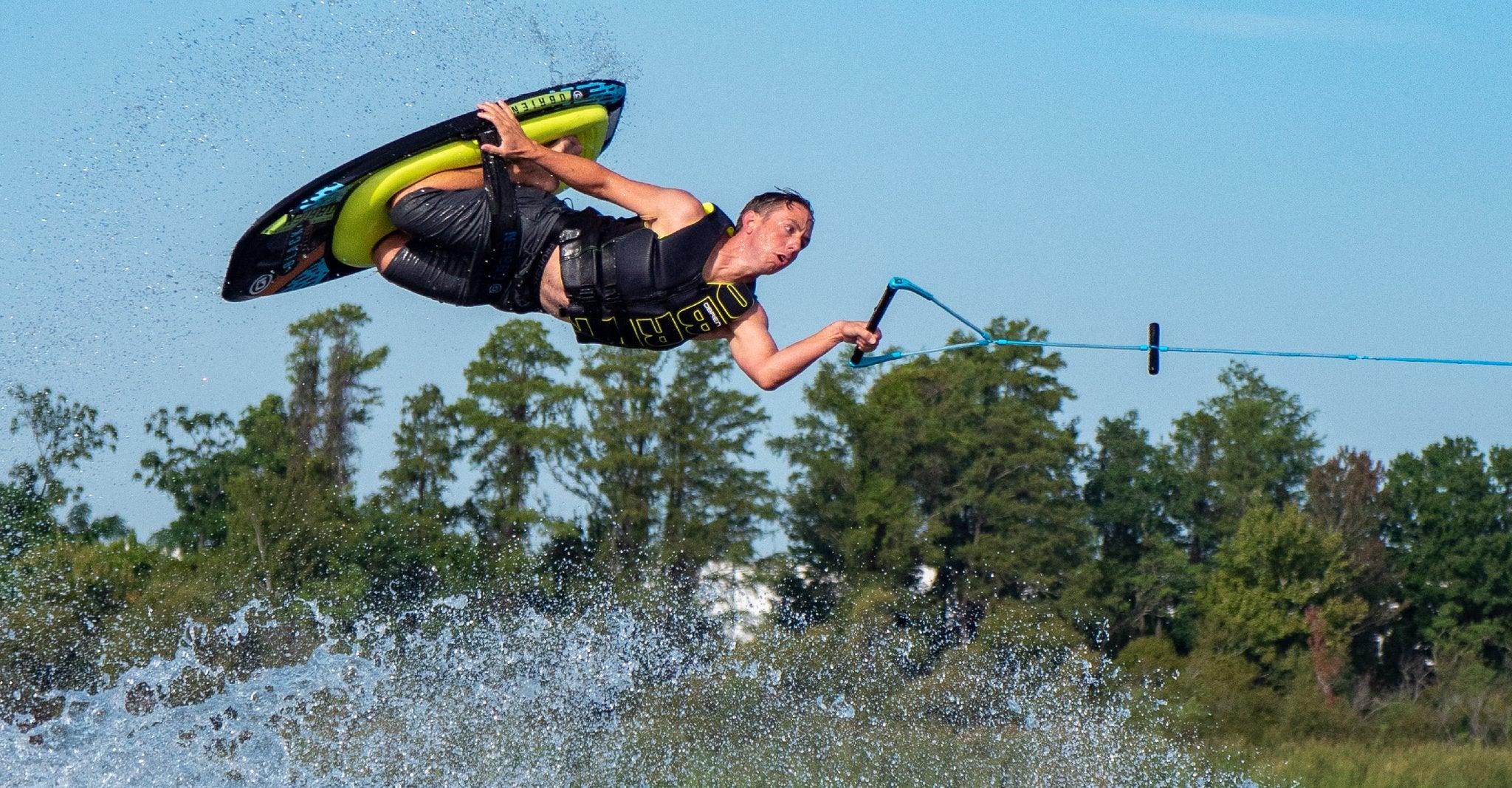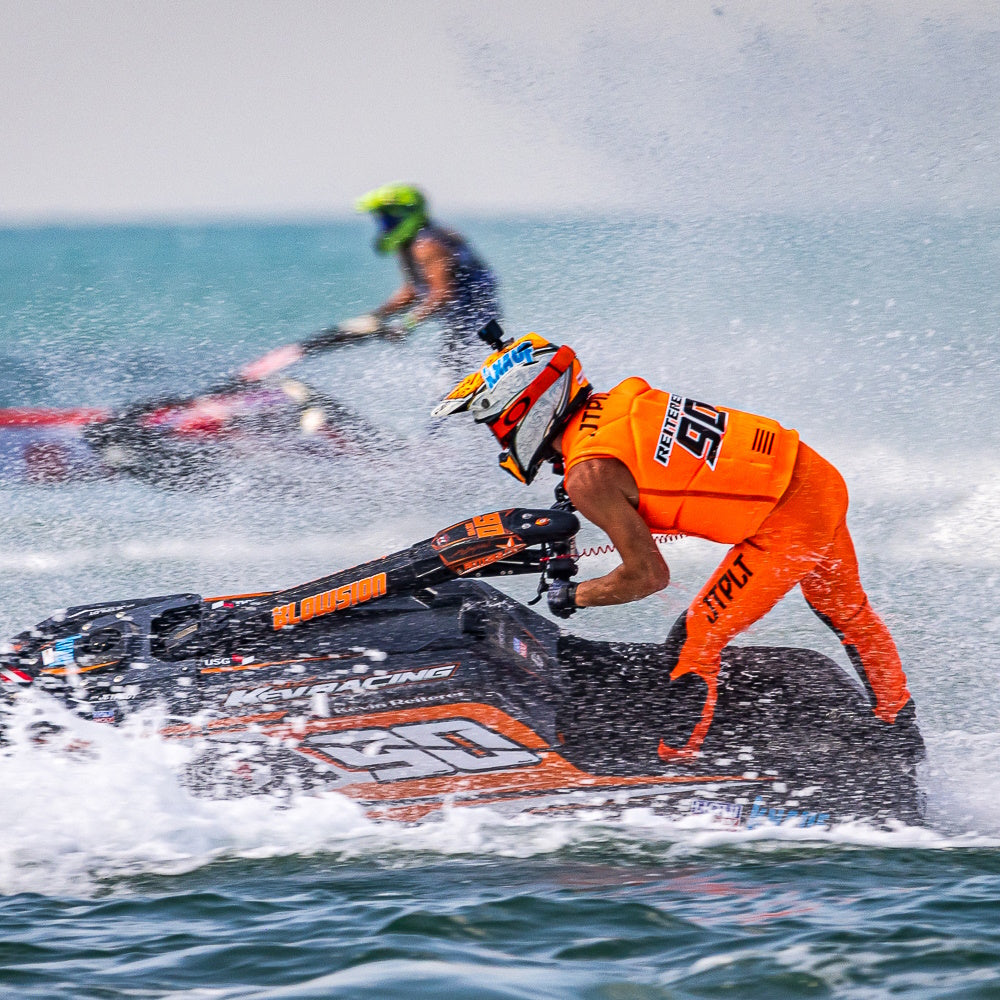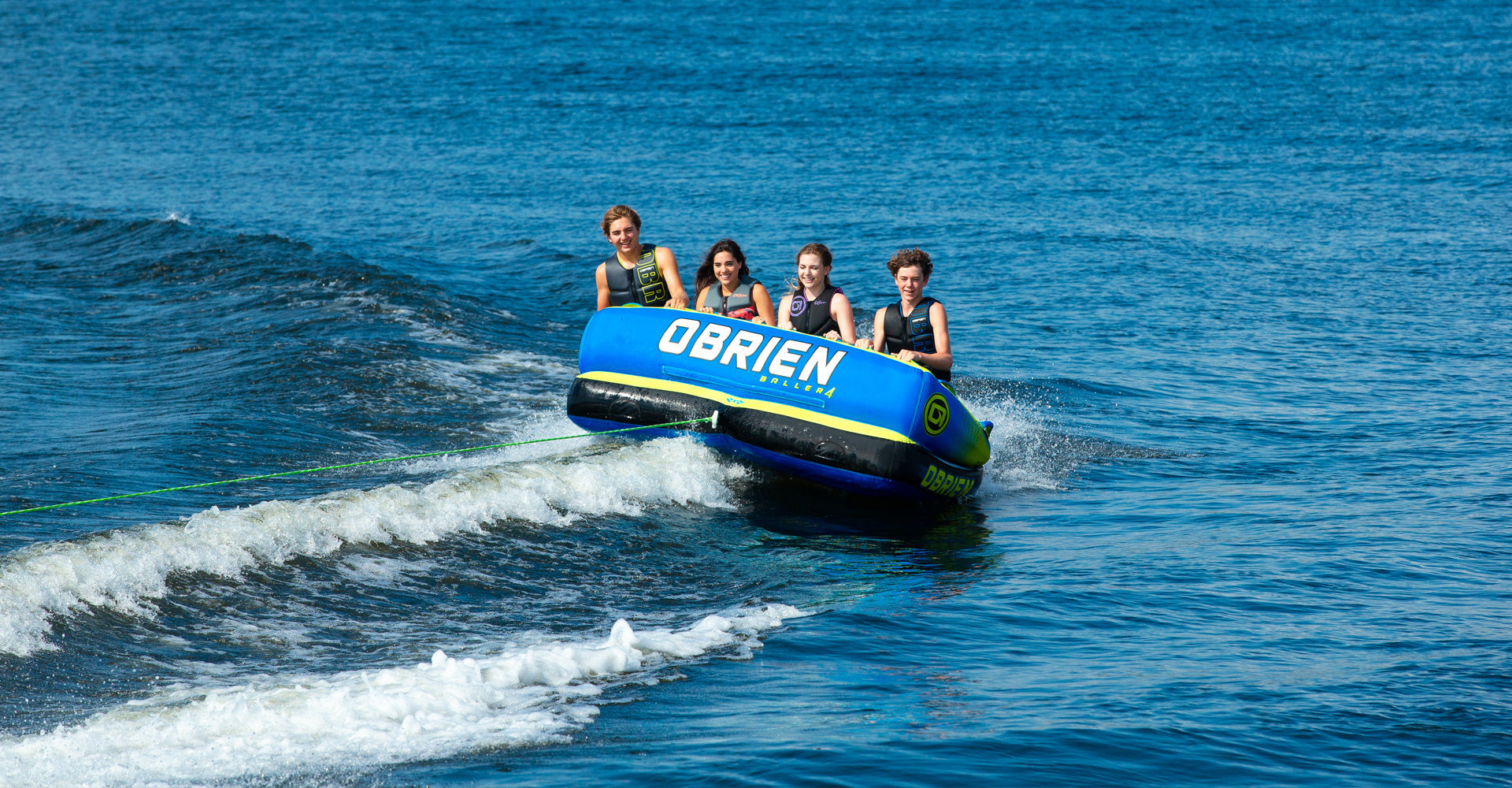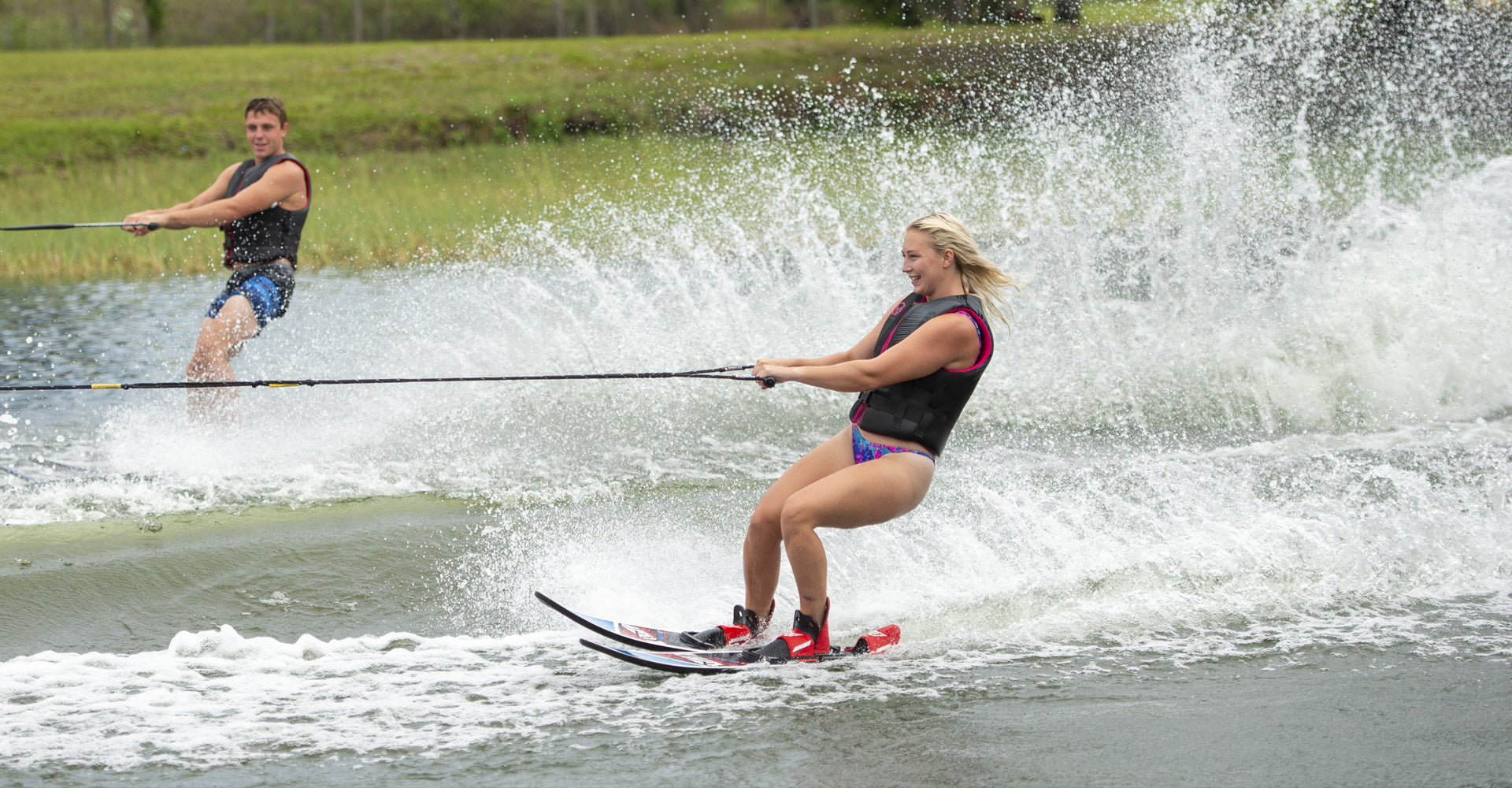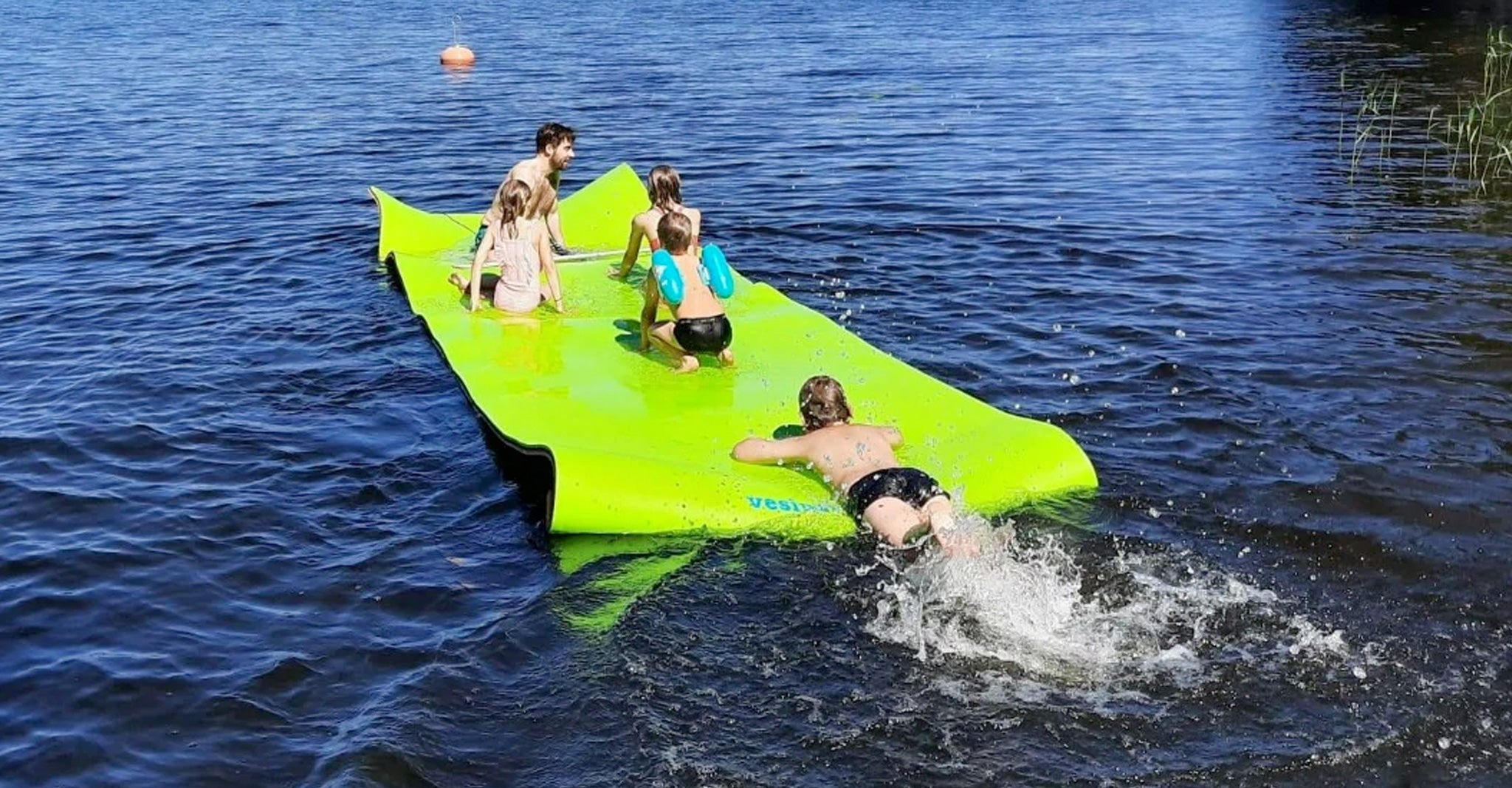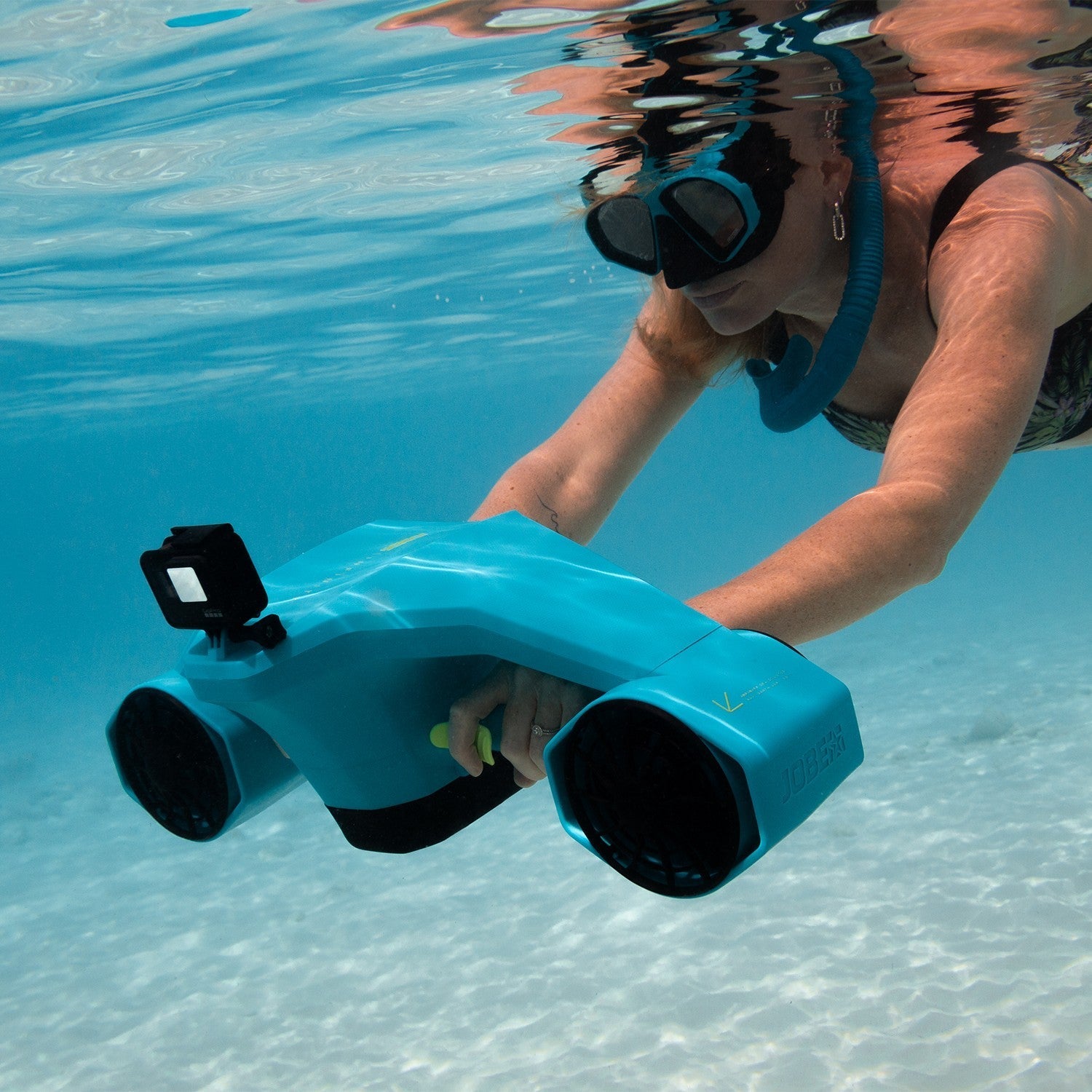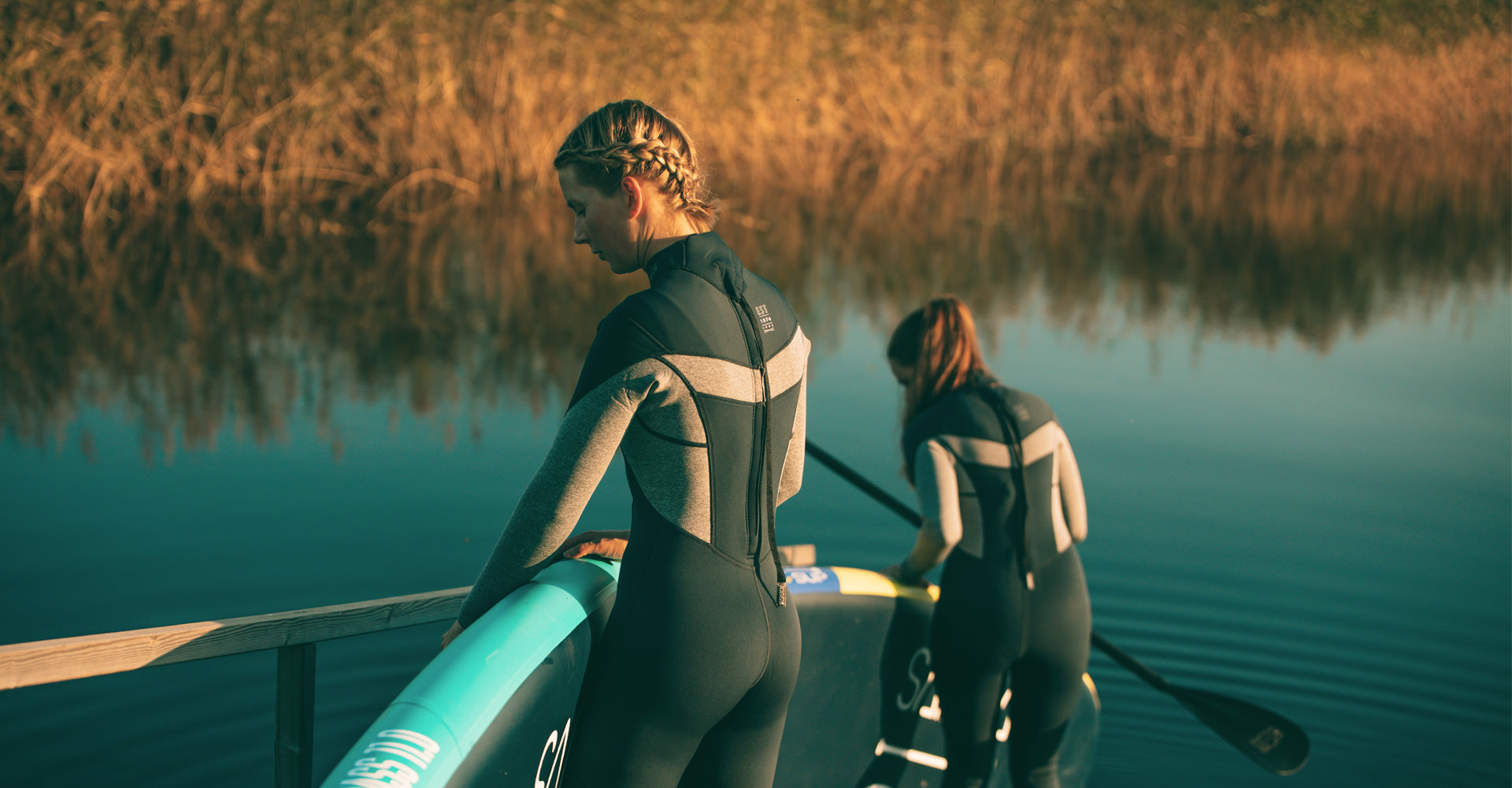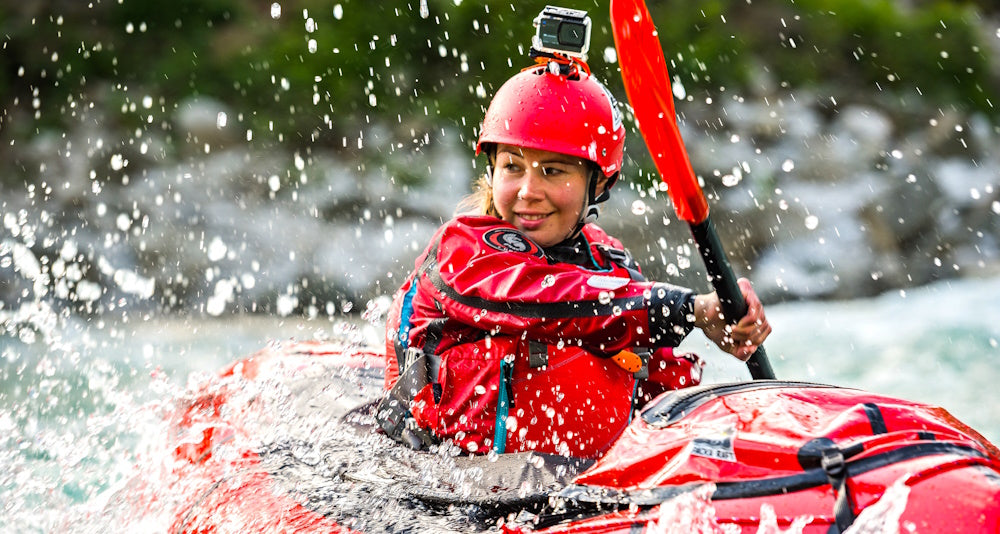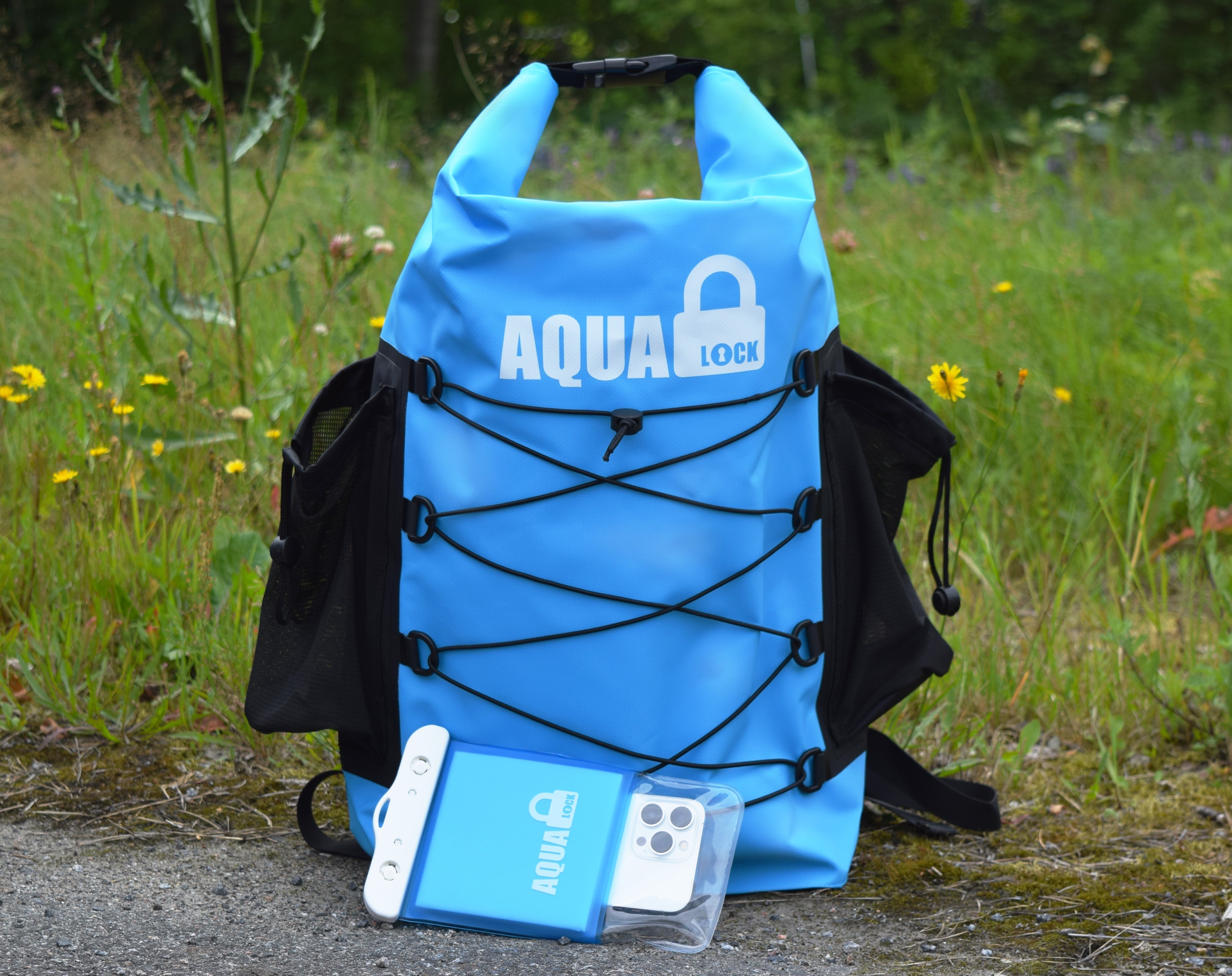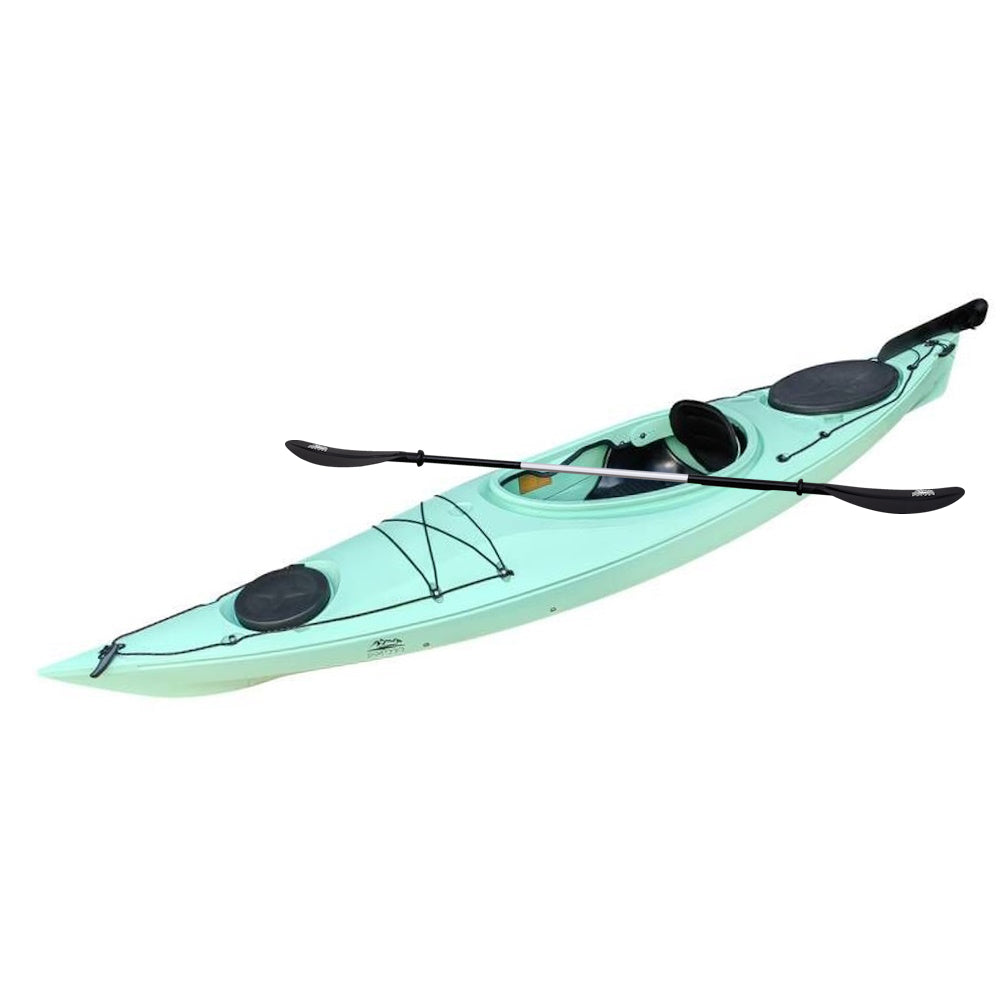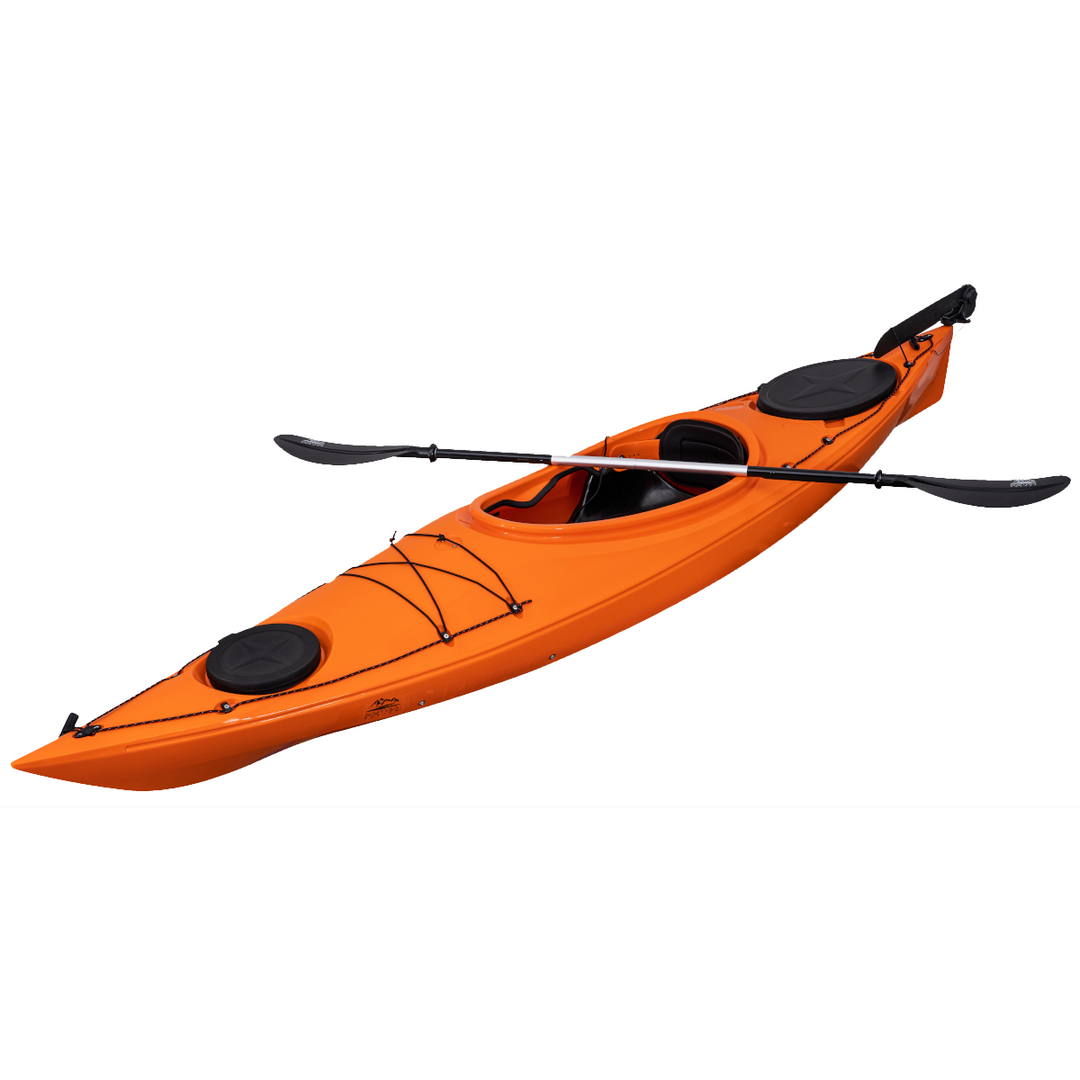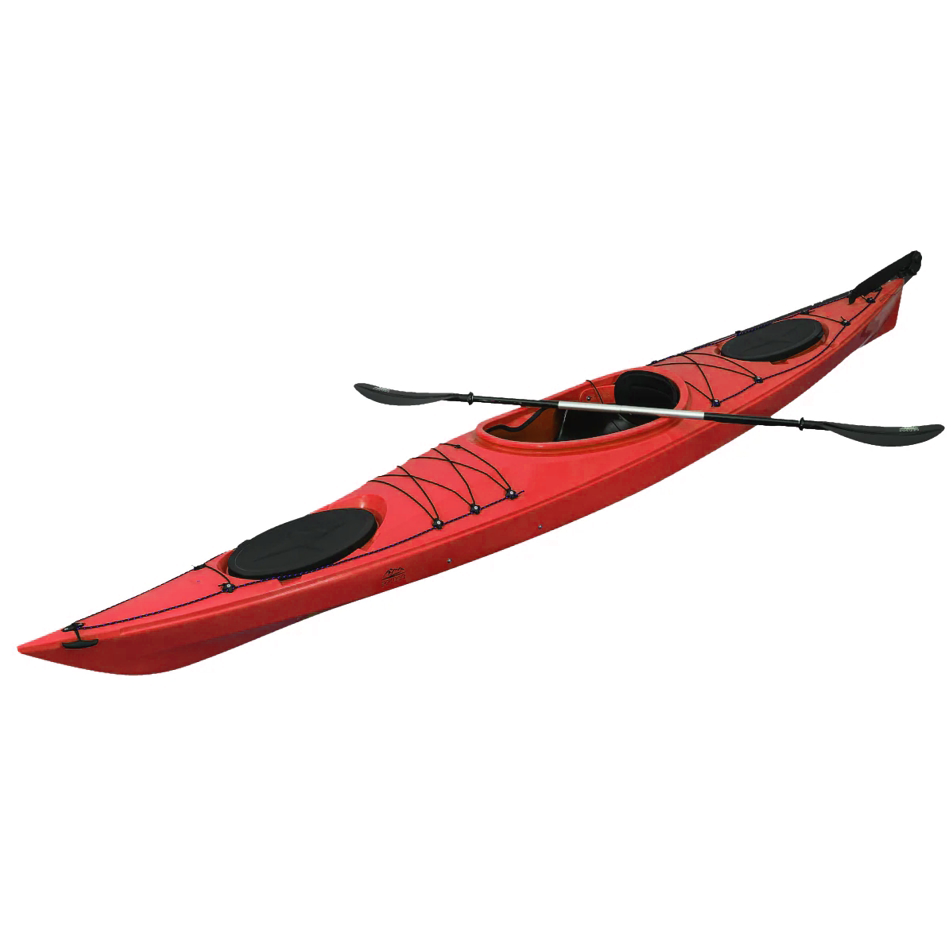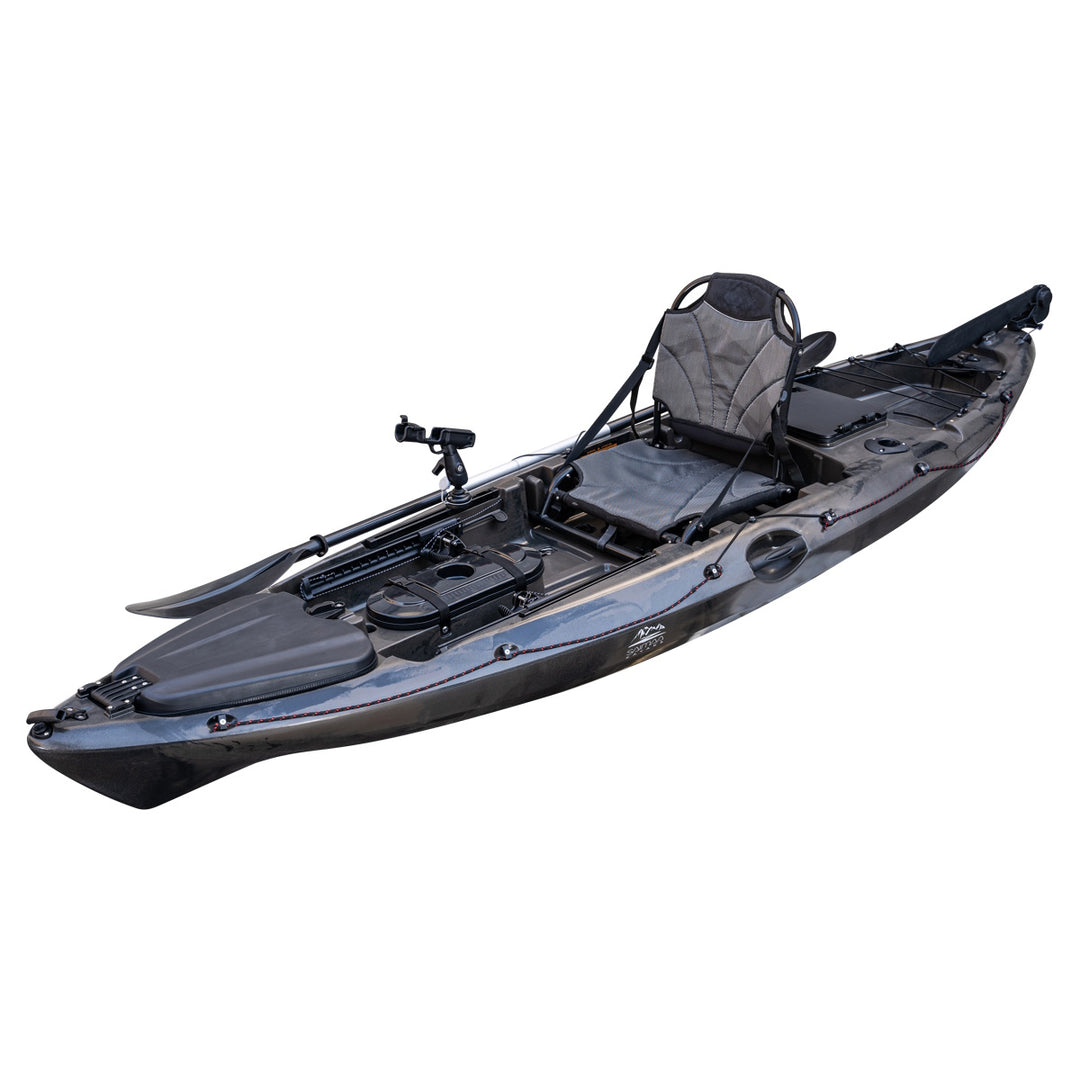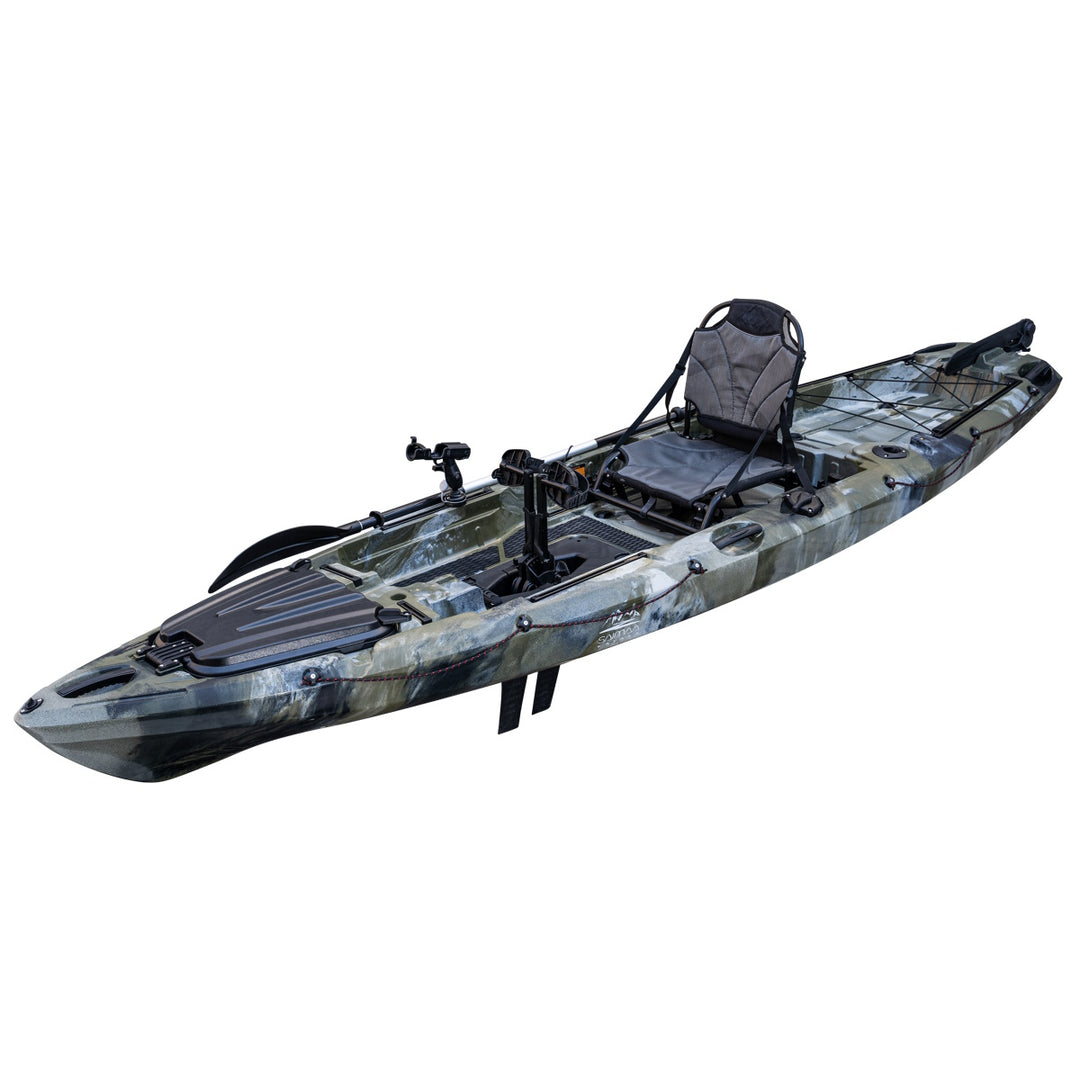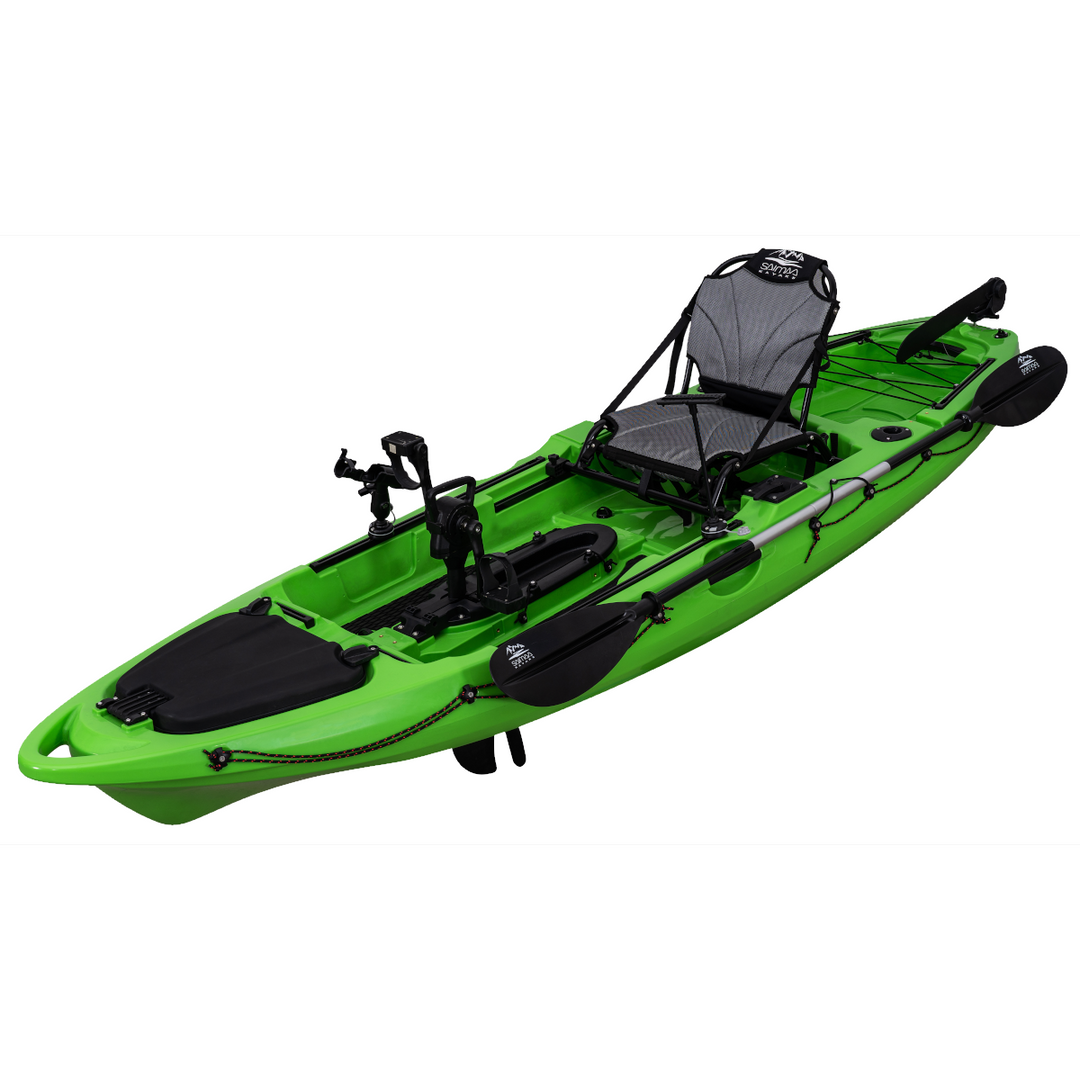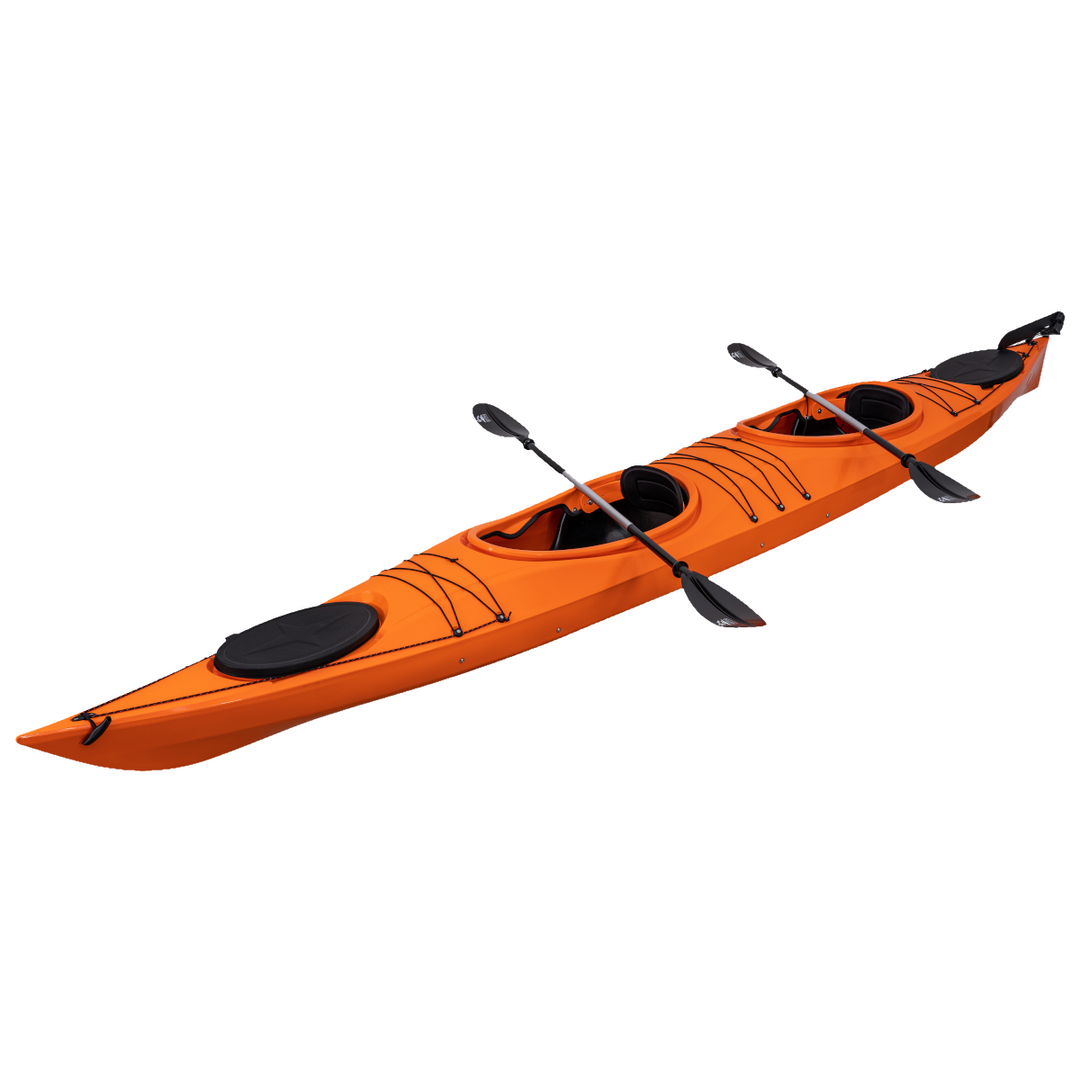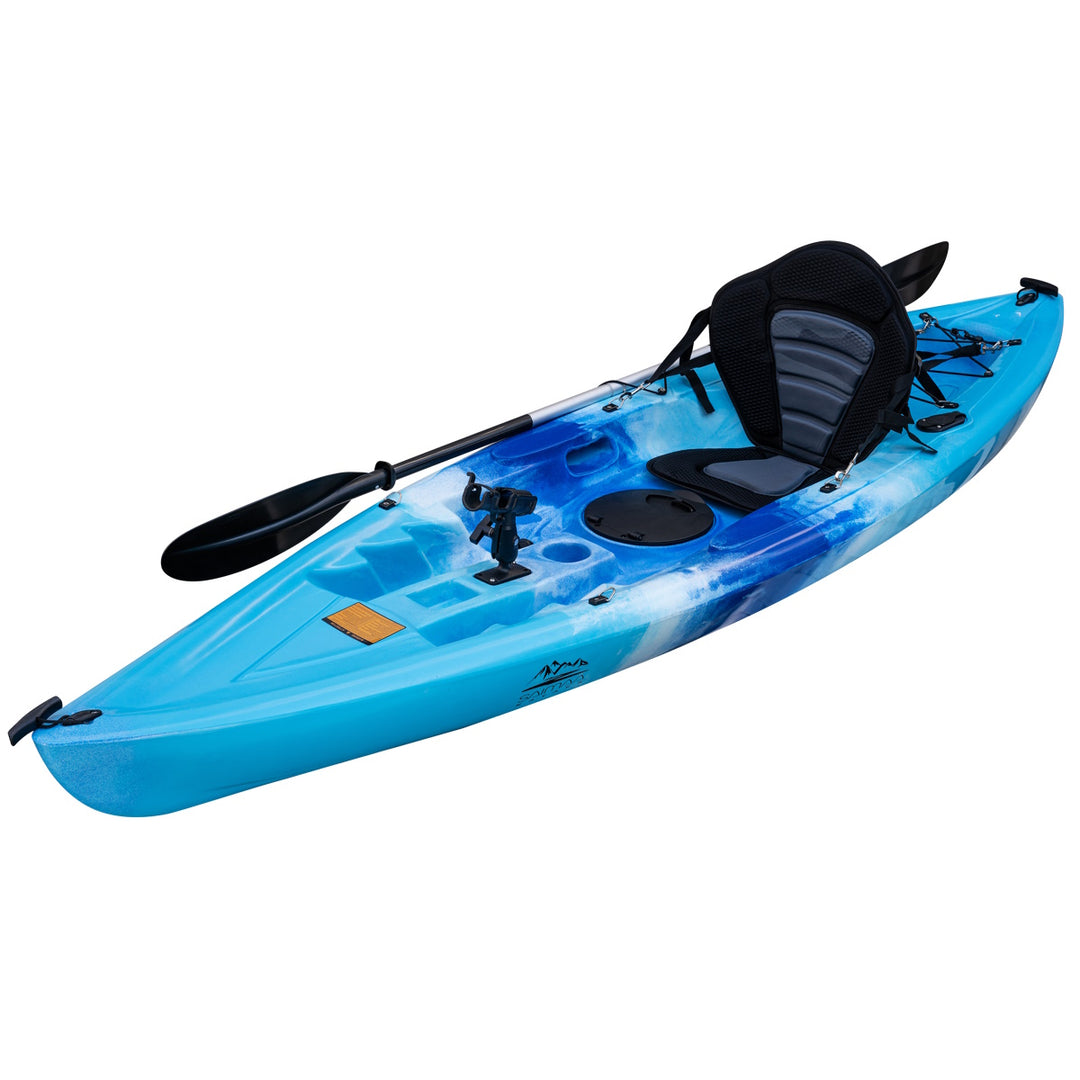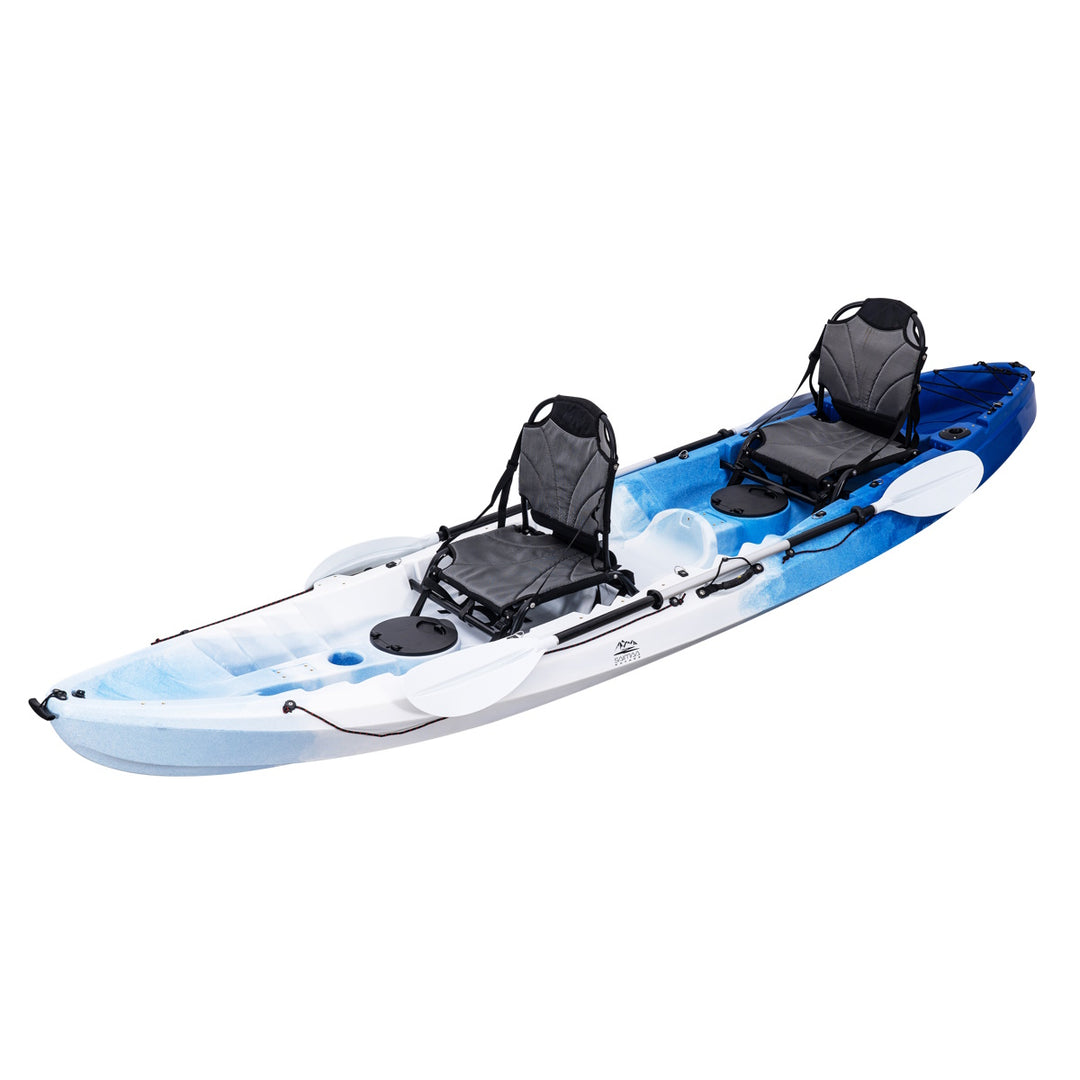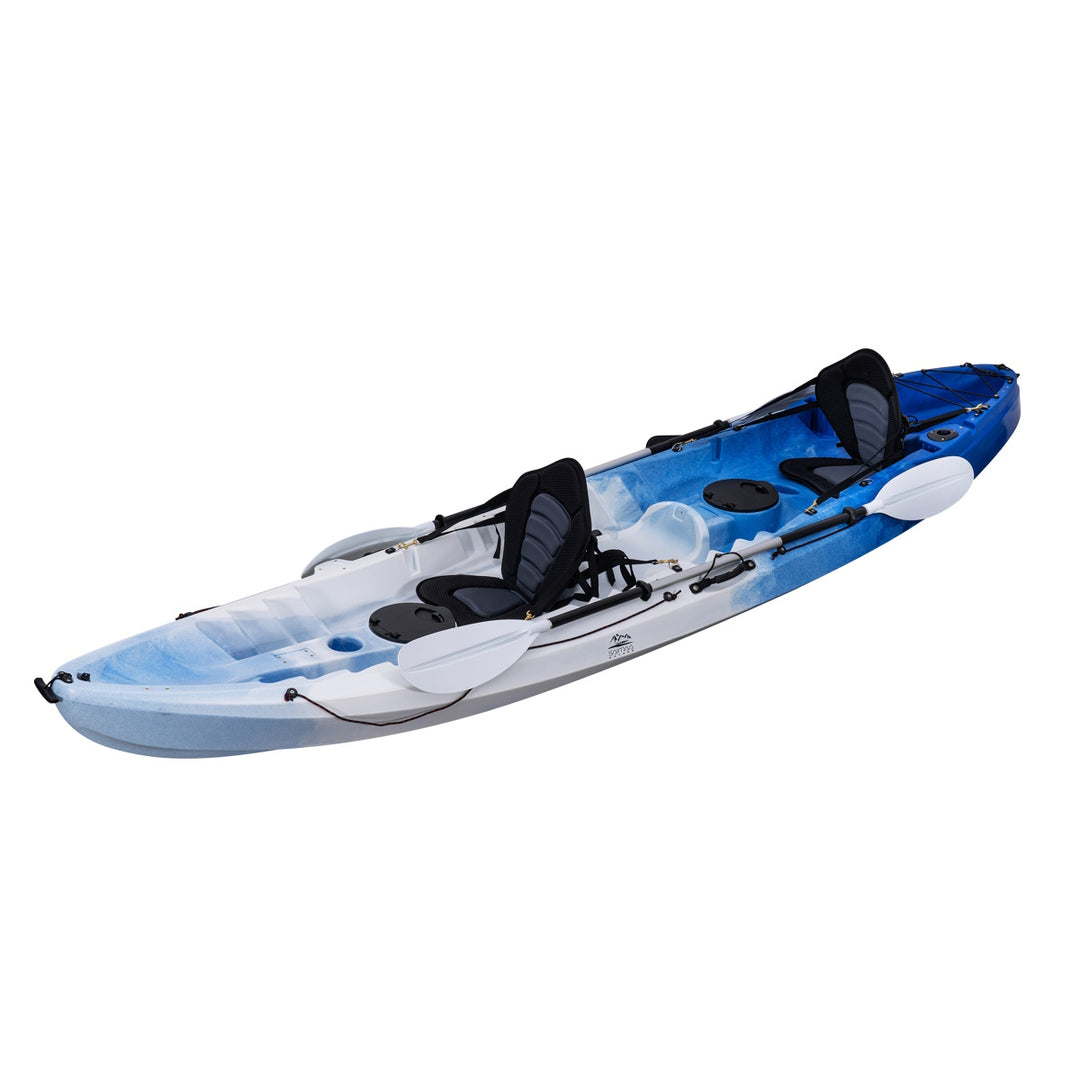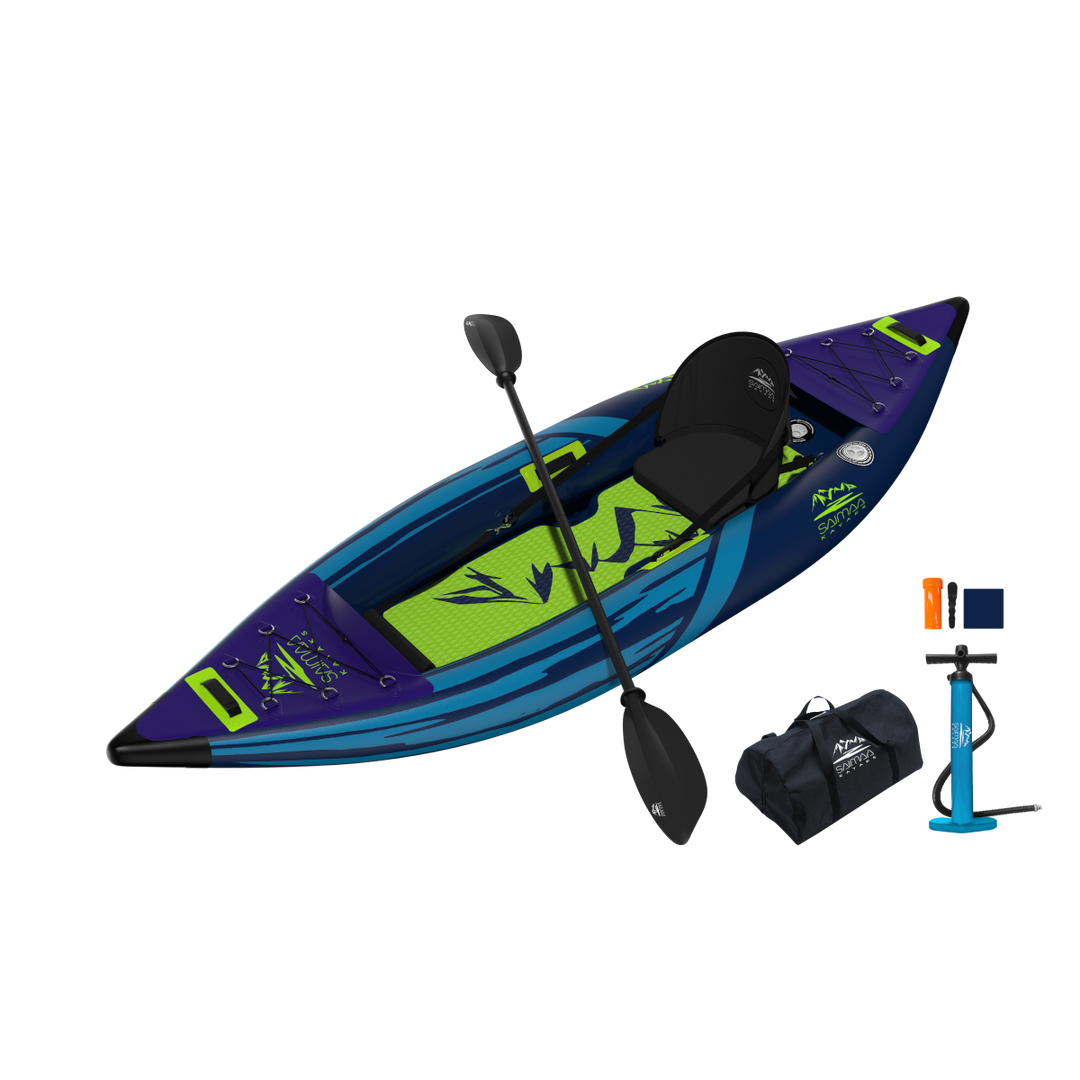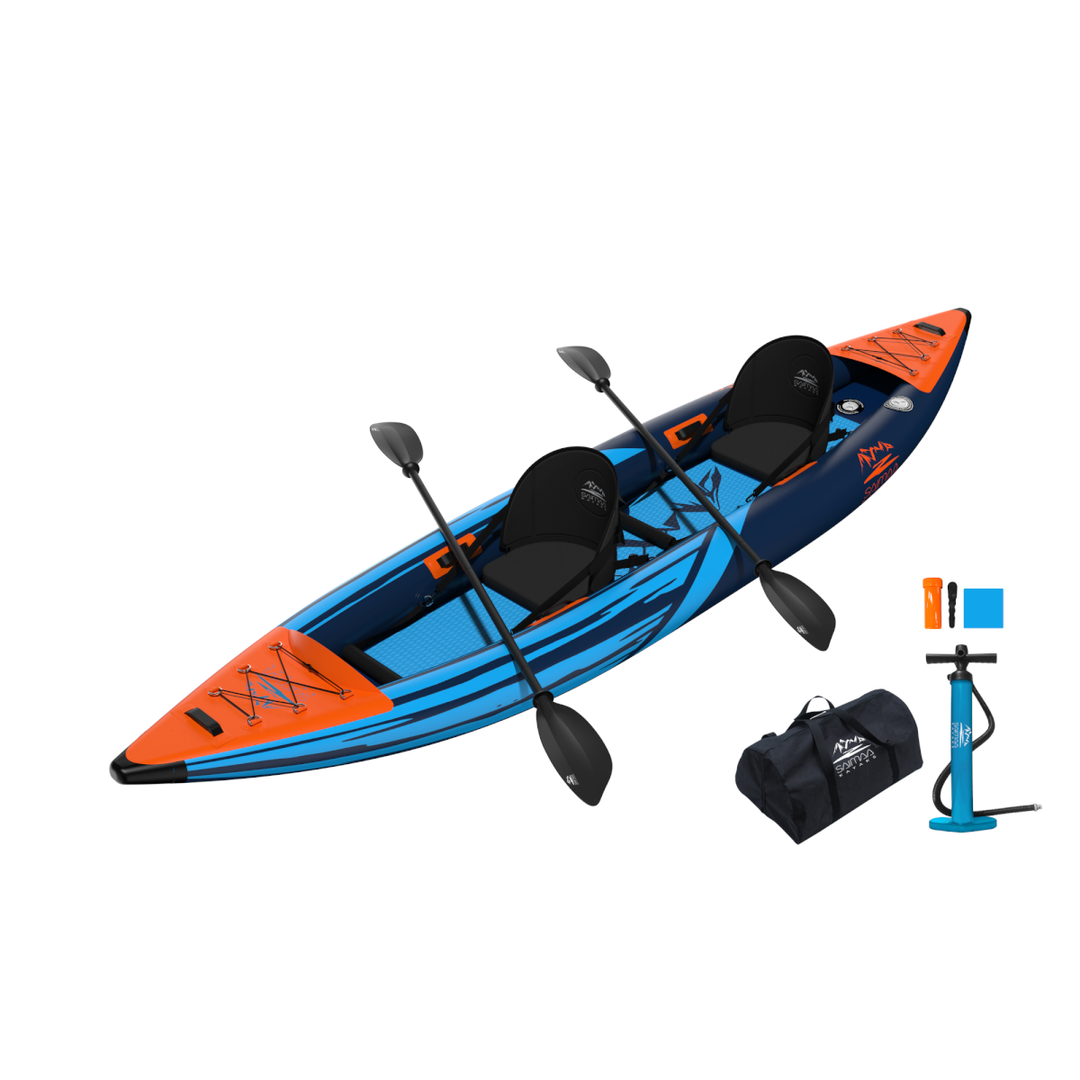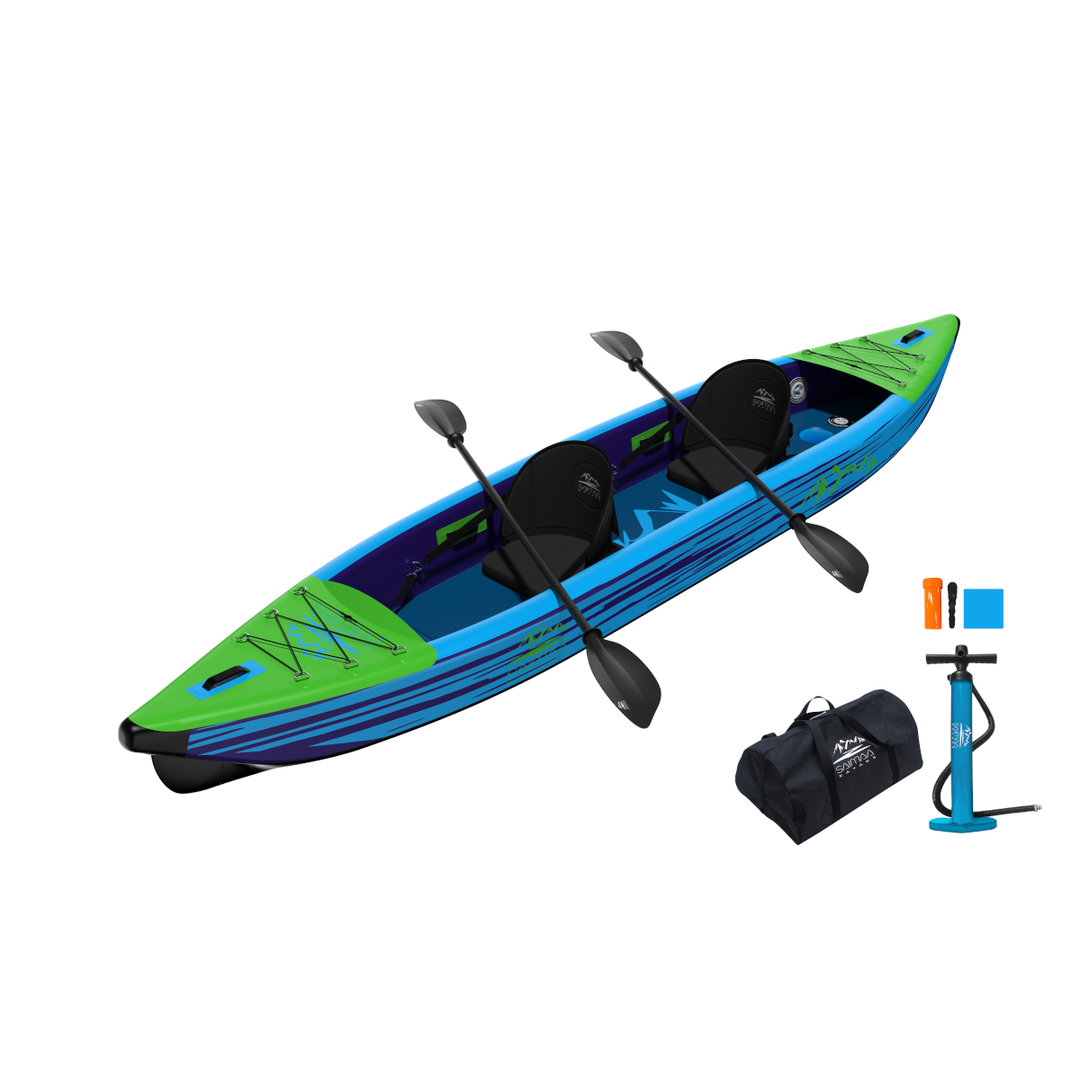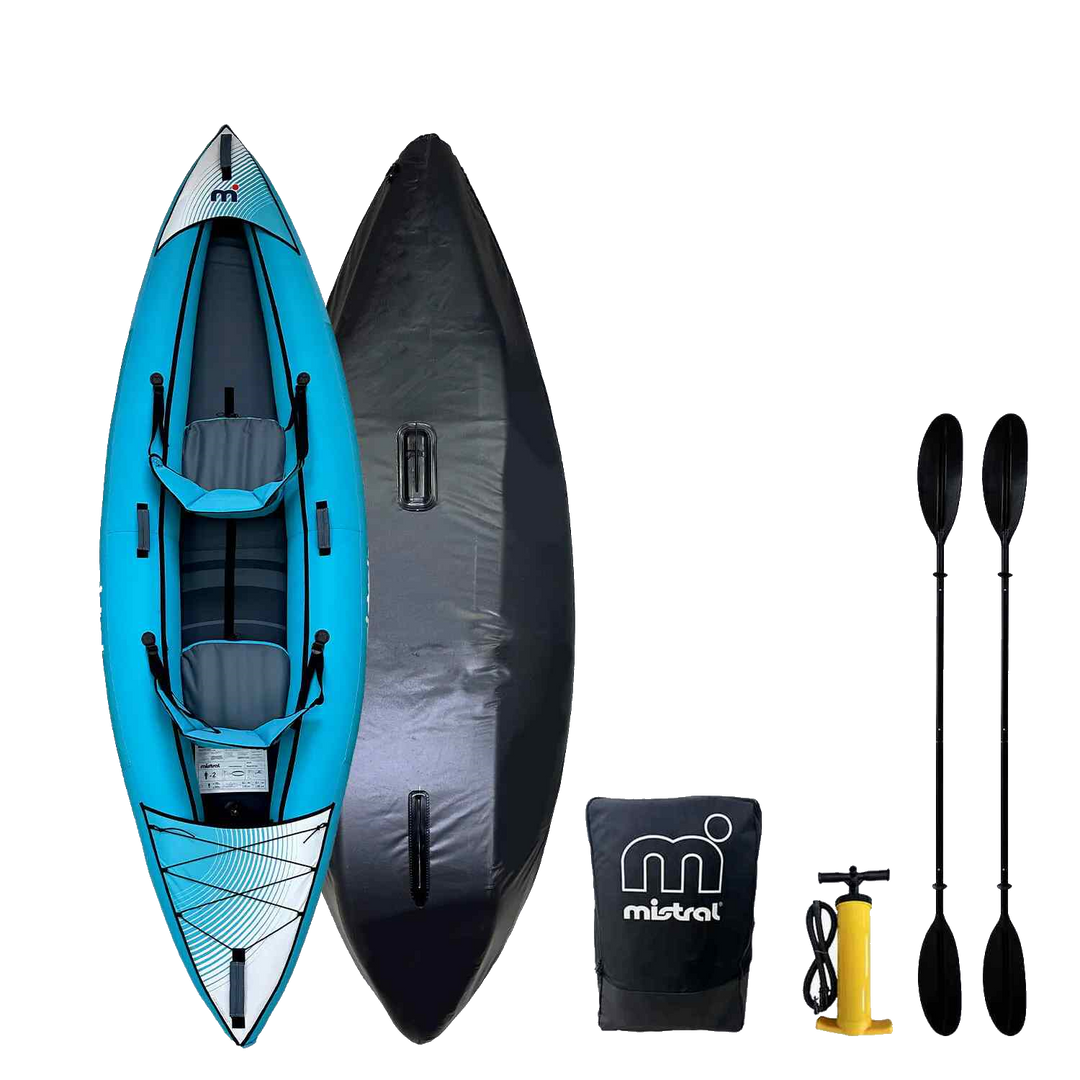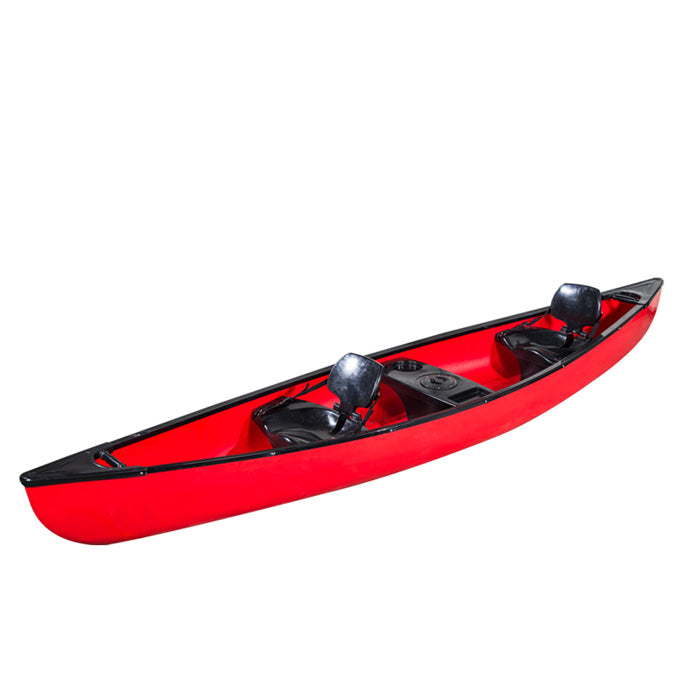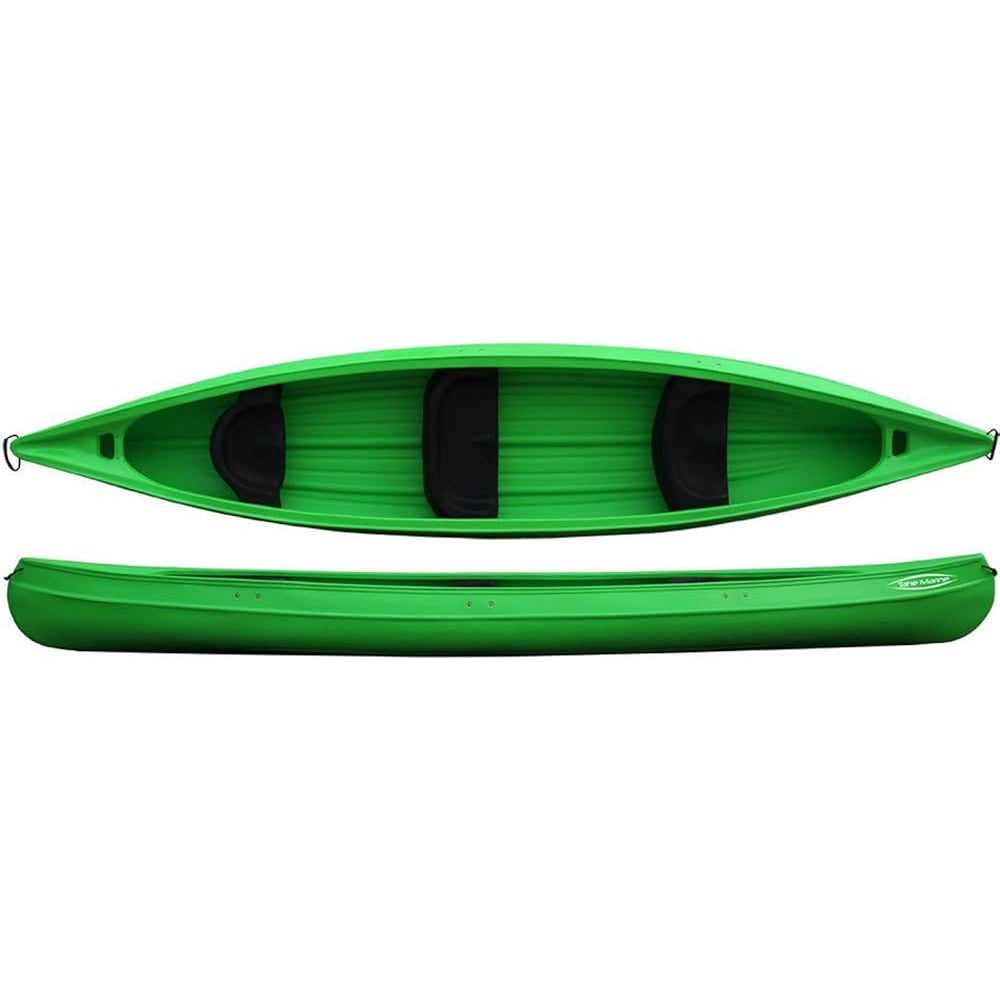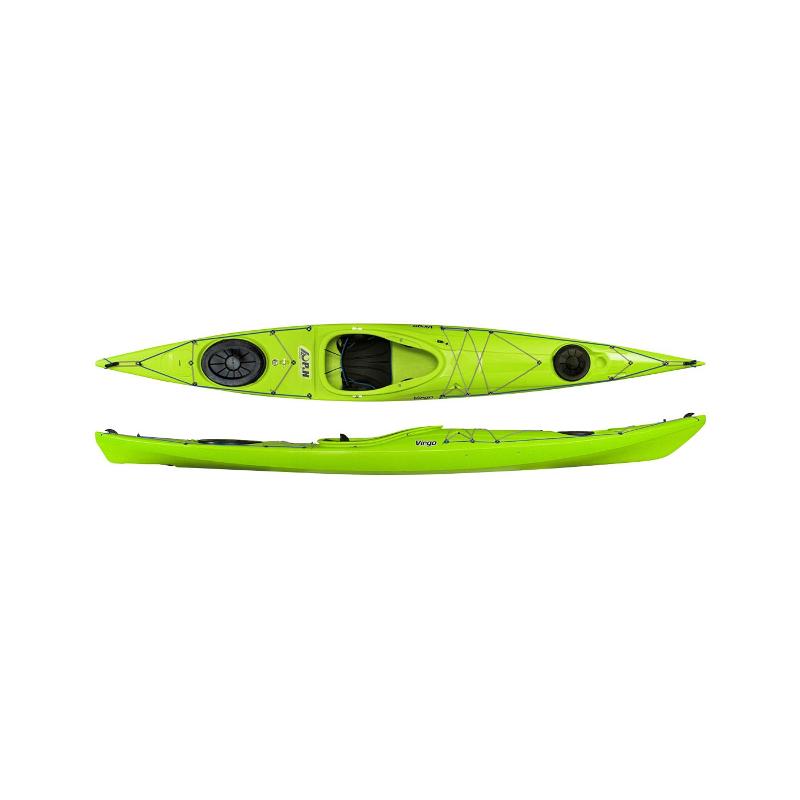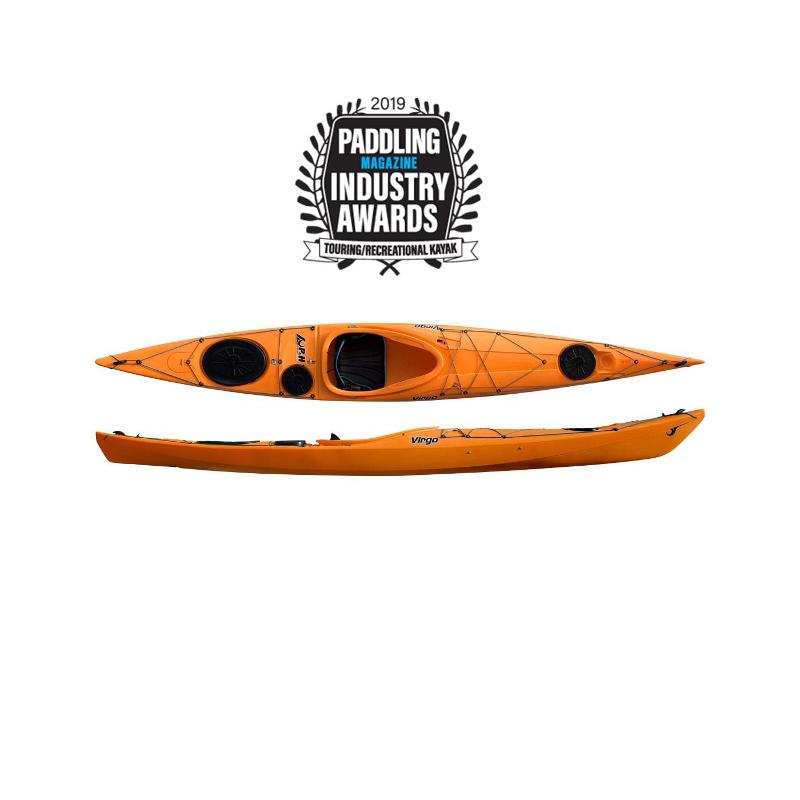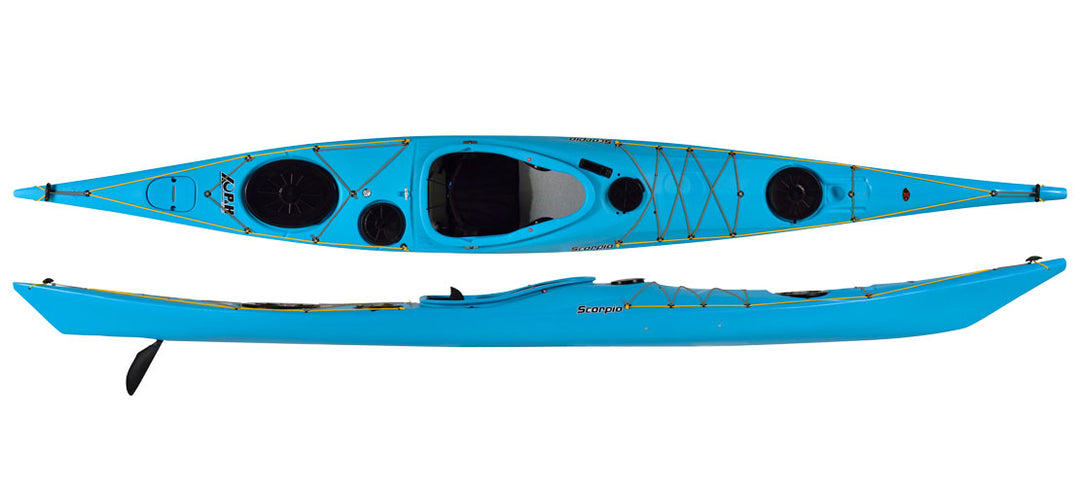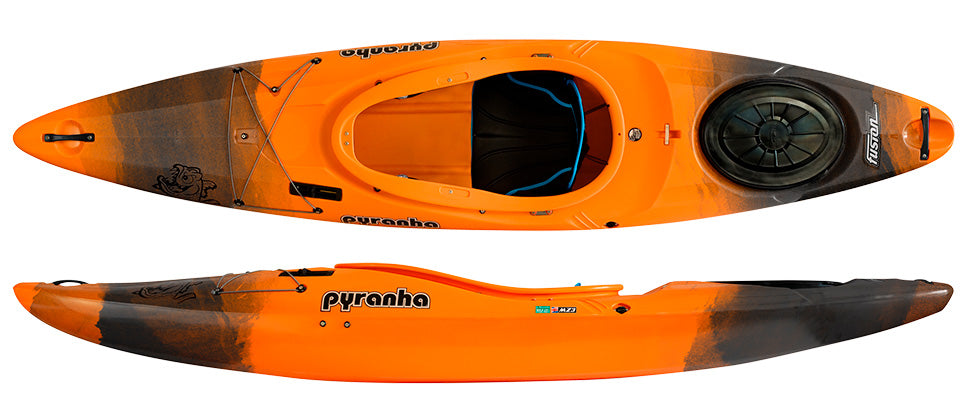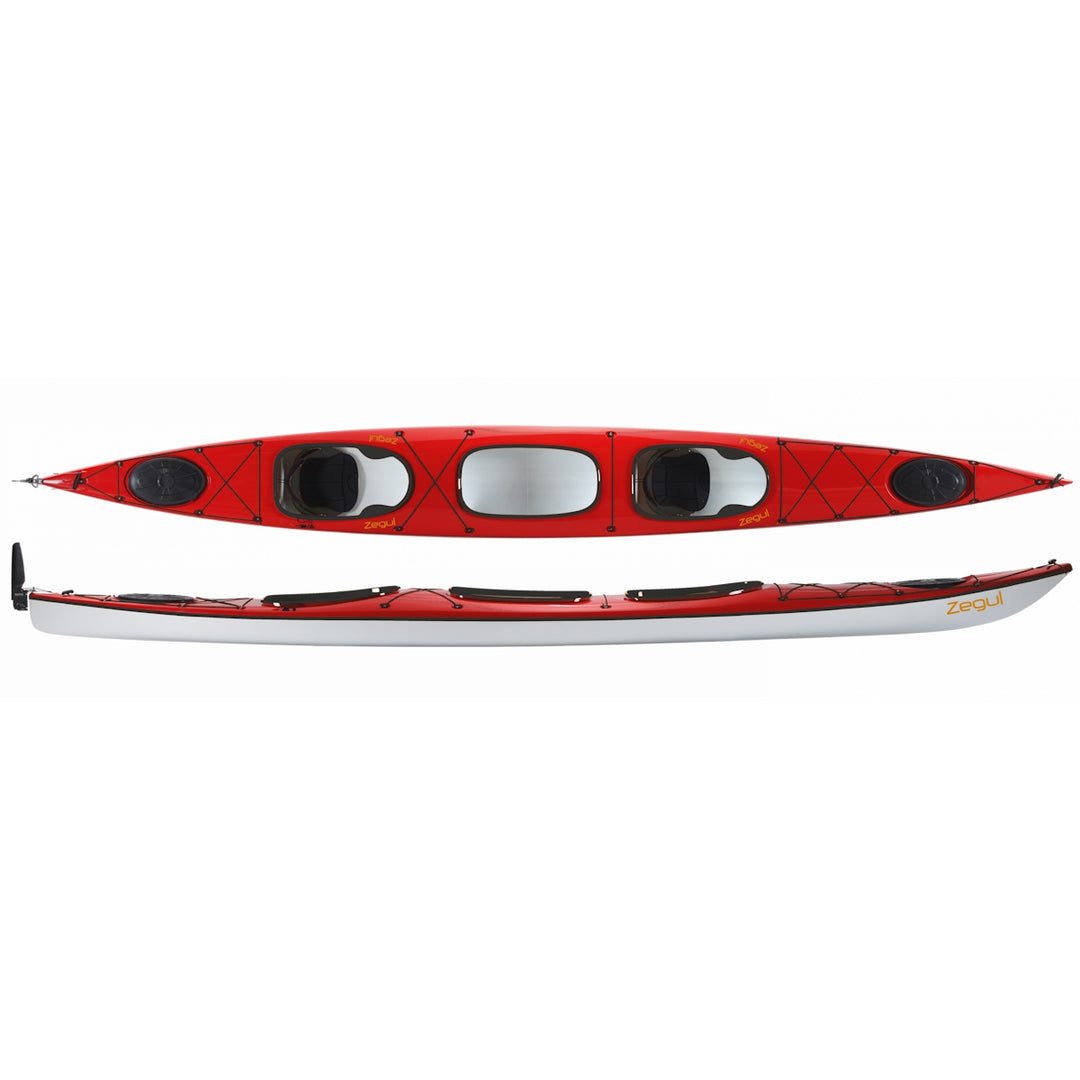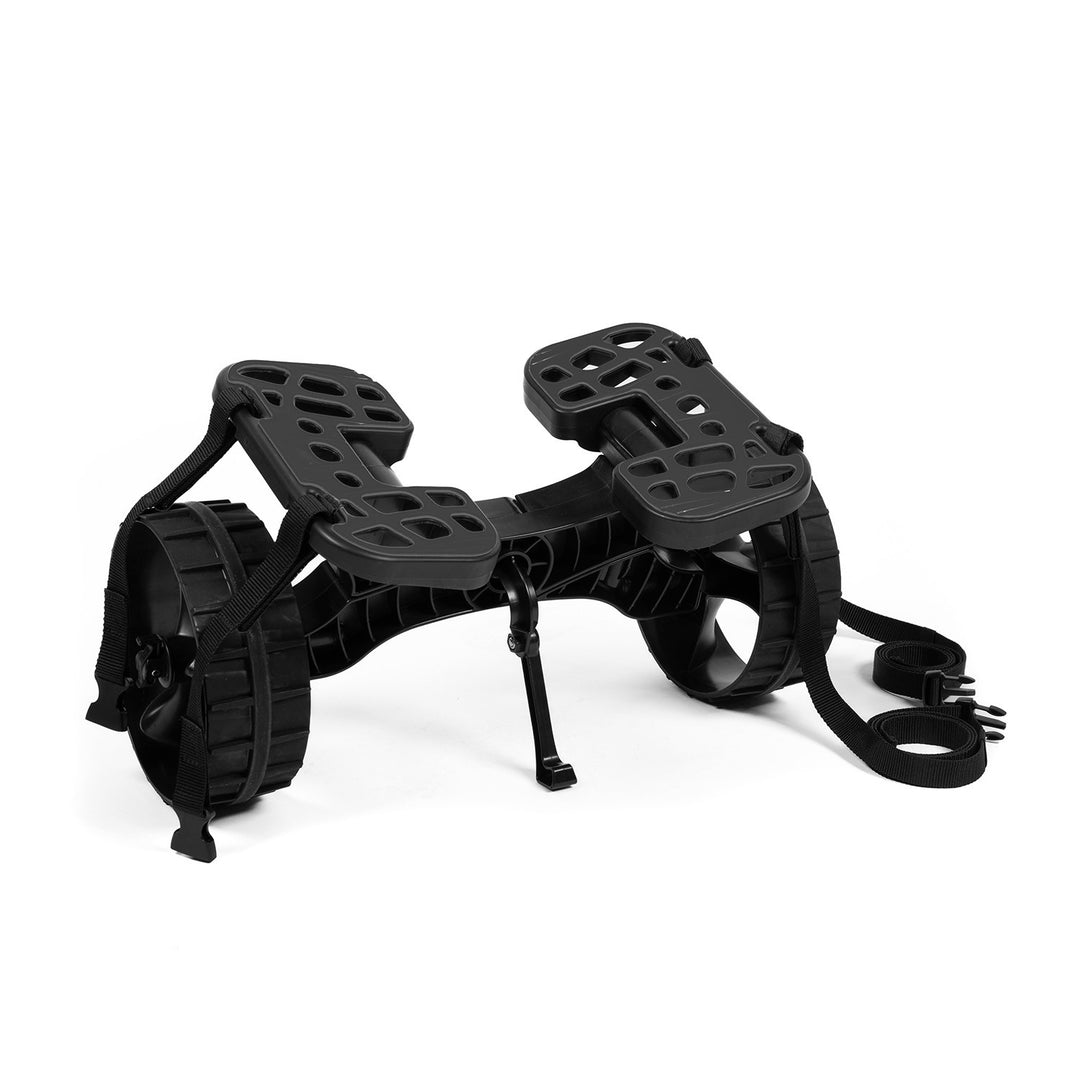Tips for Choosing the Right Kayak
Hard-shell kayaks remain the most popular kayak models in Finland, even though inflatable kayaks have gained popularity in recent years. Hard kayaks are suitable for a wide variety of uses and environments and can be divided into categories such as river and whitewater kayaks, touring kayaks, sea kayaks, SOT sit-on-top kayaks and fishing kayaks. But how do you find the right model for your needs?
Start by thinking about where you’ll mainly be paddling. Will you use your kayak on the sea, a lake, or a river? Are you planning longer touring trips, or just relaxed day paddles at the cottage? Do you want to kayak for fitness, or simply enjoy peaceful time in nature?
Kayaking is great for your shoulders, upper body, and mobility — something that many people lose due to office work. However, choosing a kayak that’s too challenging can take away the relaxed feeling, as fear of capsizing makes you tense up. In that case, you’ll miss out on the positive physical effects of paddling. Of course, practice makes perfect, and even beginners who enjoy a challenge can start with a faster, more responsive kayak.
How Kayak Size Affects Comfort
When buying a kayak, pay attention to both the hull shape and size. A kayak that’s too large rides too high in the water, making it more affected by wind and harder to steer. A model that’s too small makes it difficult to find a comfortable sitting position and can cause numbness. A cockpit that’s too tight also makes getting in and out more difficult. Kayak size is typically marked with the letters LV (low volume), MV (medium volume) and HV (high volume), of which LV suits smaller paddlers, MV medium-sized, and HV larger paddlers.
Why Kayak Length Matters
For longer kayaking trips, you’ll need a kayak with enough storage space for gear such as a tent, sleeping bag, food, and clothing. When paddling longer distances, good glide performance is also essential — as a rule of thumb, longer kayaks glide better than shorter ones. Longer models also tend to offer more storage space for your belongings.
How Kayak Width Affects Stability
The width of a kayak directly affects its stability on the water. Generally, the wider the kayak, the more stable and beginner-friendly it is. However, width alone doesn’t determine stability — hull shape must also be taken into account.
How the Hull Shape Affects Performance
Hull design has a major impact on how stable or tippy a kayak feels. Shapes range from flat to round or V-shaped, and everything in between. Keep in mind that sea and lake waves behave differently — the kayak’s shape affects how it handles them.
A flat hull offers excellent initial stability, making it a popular choice for beginners who want to relax and enjoy the scenery.
A gently V-shaped hull has become increasingly popular in recent years. These models combine good initial stability with easy maneuverability.
A strongly V-shaped or round-bottomed hull is often too unstable for beginners, but experienced paddlers appreciate their directional control, speed, and responsive feel in waves and surf.
What to Look for in Kayak Features
If you’re buying a flat-bottomed kayak for longer trips, make sure it has a skeg or rudder to help it track straight, even in side winds. Without one, you’ll end up paddling harder on one side to keep it on course. Most well-equipped touring kayaks include a skeg or rudder as standard.
Pay special attention to the seat as well — you’ll immediately notice the difference between models. A poorly designed seat can cause discomfort and take away the joy of paddling.
Make sure the storage compartments suit your needs and are equipped with watertight hatches.
Saimaa Kayaks offers an excellent range of kayaks for beginners and intermediate paddlers with great value for money. For example, the Saimaa Kayaks Smart is an agile and easy-to-paddle kayak, ideal for beginners exploring nearby shores and rivers from the cottage. Buying a kayak has never been this easy and worry-free!
Available models include pedal-powered fishing kayaks, compact river kayaks, stable open kayaks and canoes for family use, as well as fast touring kayaks for lakes.
If you’re an experienced paddler looking for a high-performance sea kayak, we highly recommend the British manufacturer P&H, known for its premium-quality kayaks.
Looking for advice on choosing the right paddle? Check out our Kayak and Canoe Paddle Guide for expert tips.
Kayak Storage, Transport, Handling and Maintenance
Proper storage, careful transport, and regular maintenance will greatly extend the life of your kayak. Protect it from UV damage and moisture by storing it on its side or upside down on a rack. Use padded J-racks during transport and ensure your kayak is secured firmly but gently, especially in warm weather. Always rinse your kayak after use and clean small crevices and metal parts thoroughly.
Use suitable transport accessories, such as a kayak trolley, and lift rather than drag the kayak. Check screws, ropes, and wear surfaces regularly to avoid unpleasant surprises.
For more detailed guidance, see our Kayak Storage, Transport, Handling and Maintenance Guide.



